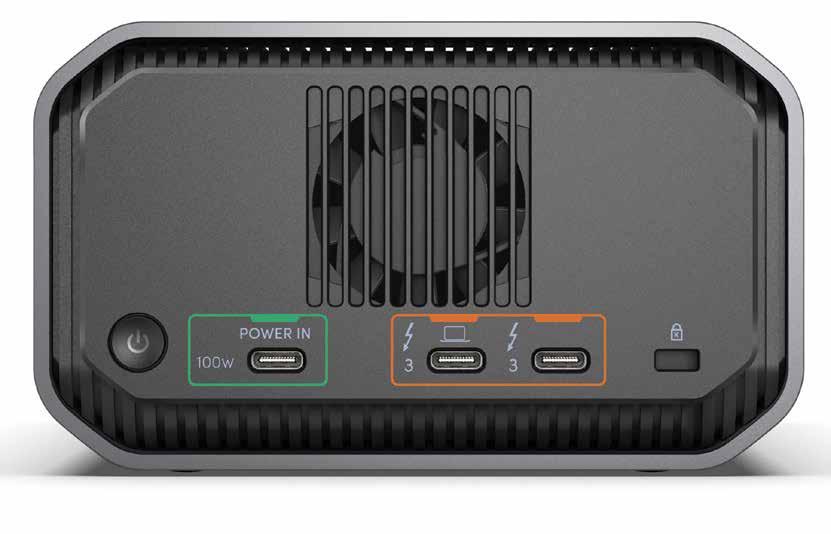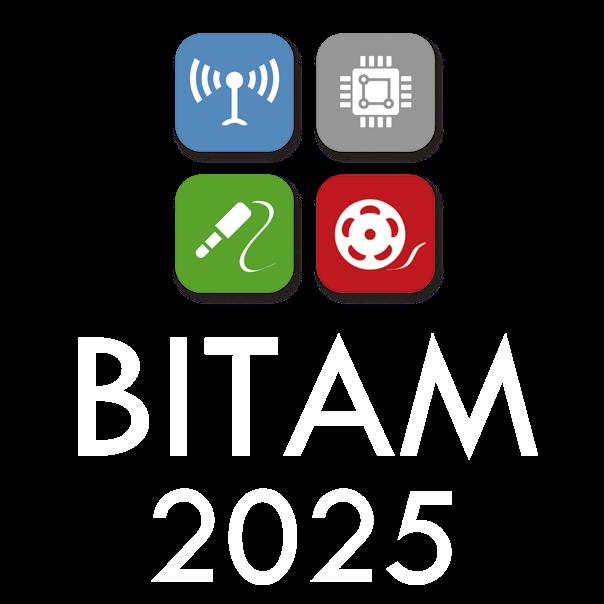




Sports productions have firmly established themselves as the ideal stage for deploying the industry’s most cutting-edge innovations. It is no coincidence that they will be one of the key themes at NAB 2025, one of the most influential shows in the broadcast sector. With the event just around the corner, this issue delves into its core themes while also offering a comprehensive overview of the most significant product launches from exhibitors. To create a varied and useful guide for attendees, we have included both well-established companies and emerging firms whose portfolios have captured the interest of our editorial team.
Driven by our desire to explore the technological advancements in sports production, we also take a closer look at the remote production workflows implemented by Mediapro in LaLiga—one of the world’s leading football leagues. The Spanish tournament has now surpassed the milestone of 3,000 matches produced using this technology, making it the perfect opportunity to analyze its key applications in a conversation with Mediapro’s CTO, Emili Planas.
Editor in chief
Javier de Martín editor@tmbroadcast.com
Creative Direction
Mercedes González mercedes.gonzalez@tmbroadcast.com
Chief Editor
Daniel Esparza press@tmbroadcast.com
Similarly, with the goal of enhancing its sports coverage—while keeping an eye on the upcoming 2026 Winter Olympics—Swedish public broadcaster SVT has just rolled out a new software-based audiovisual infrastructure for communication, distribution, and production, marking a significant milestone for the industry.
For this occasion, we spoke with SVT’s CTO, Adde Granberg, who provides firsthand insights into this project and the philosophy behind it. He also shares his candid market perspective—something we deeply appreciate. Granberg is convinced that the future lies in the convergence of the broadcast and IT worlds—otherwise, our industry risks becoming “a dinosaur in the modern world.” He leaves us with thought-provoking insights, such as: “We must also recognize that broadcast standards have primarily been maintained to preserve legacy systems, not to open the industry to the future.”
We strongly recommend this interview, along with the rest of the exclusive content we have prepared for you. We wish you great success at the NAB show—see you in next month’s issue!
Key account manager
Patricia Pérez ppt@tmbroadcast.com
Administration
Laura de Diego administration@tmbroadcast.com
Published in Spain ISSN: 2659-5966
TM Broadcast International #139 March 2025
TM Broadcast International is a magazine published by Daró Media Group SL Centro Empresarial Tartessos Calle Pollensa 2, oficina 14 28290 Las Rozas (Madrid), Spain Phone +34 91 640 46 43
6
Shaping the future of broadcast with a focus on sports, streaming, and AI
Las Vegas Convention Center will host, from April 5 to 9, one of the leading global broadcast events, with an expected attendance of 65,000 visitors and 1,300 exhibitors
Adde Granberg, CTO at SVT: “As long as broadcast remains separate from IT, it will eventually become obsolete and die—like a dinosaur in the modern world”

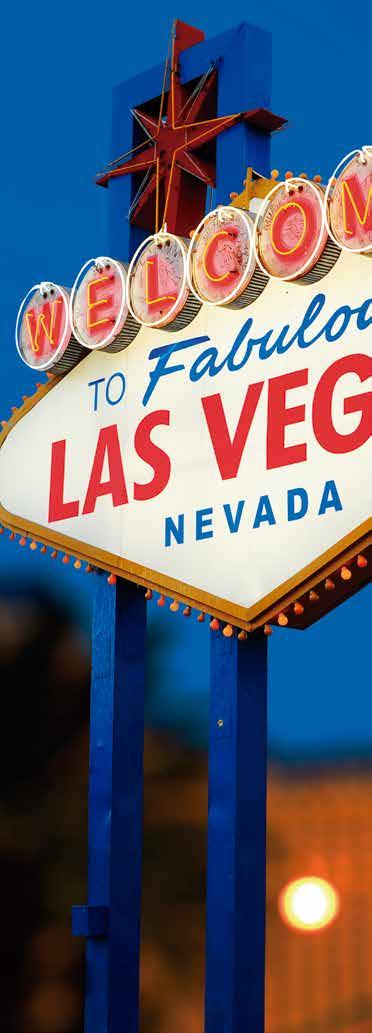

REMOTE PRODUCTIONS
Mediapro has reached the figure of 3,000 matches produced remotely. With this milestone, we are taking the opportunity to explore the keys to this type of broadcasting with Emili Planas, CTO of Mediapro. “For remote production to be a good option, the stars have to align. It’s not something that always pays off”, he warned.
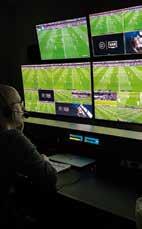
A must-have for all of us
By Carlos Medina, Audiovisual Technology Advisor.
Any of us may have had the experience, at some point in life, of not having enough light when aiming at taking a photograph with a mobile phone.

TEST ZONE
You decide where to store your profession today and tomorrow. SanDiskProfessional Kit
By Carlos Medina, Audiovisual Technology Advisor.
All of us have had some kind of problem, mishap or bad experience with external storage units in both the most private and in professional environments.
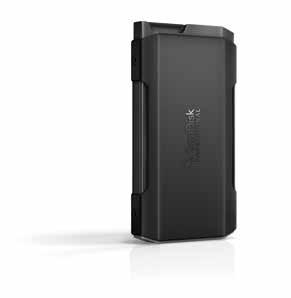
Panasonic will be releasing four new models of 4k camcorders to try to meet video production, broadcasting and distribution needs: AG-CX20, AG-CX18, HC-X1600 and HC-X1200. Both the AG-CX20 and AG-CX18 come with a removable handle unit, while the HC-X1600 is compatible with a separately sold handle unit, as the company has claimed in a statement.
The 4K 60p 10-bit camcorders combine a compact and lightweight body with optical performance featuring a 25mm wide-angle and 24x optical zoom.
These models have attempted to include improvements based on feedback received from industry workers. The main features are:
› High-resolution OLED viewfinder with 1,770K dots and larger eyecups.
› USB-C port, which can also power the camcorder.
› A new low bitrate mode for FHD MP4 recording will be added in the next firmware update. It will support 28 Mbps (50p/59.94p), 24 Mbps (23.98p), and 20 Mbps (25p/29.97p).
› Low speed zoom: approximately 2.8 times slower than the previous model, to expand the range of video expression.

› Shooting guideline display support: allows users to check composition and horizontality.
› Network functionality: Supports Wi-Fi 5 GHz and adds USB tethering functionality.
› Improved operability through linkage with an app: The app “HC-ROP” now supports the live view function.
The models AG-CX20 and AG-CX18 admit FHD live broadcast via Wi-Fi and Ethernet. From a system standpoint, both are equipped with 3G-SDI and they admit simultaneous output with HDMI. Finally, the AG-CX20 provides NDI HX2-compliant IP connectivity and, by updating the firmware, it will be compatible with the protocol SRT for streaming.
The integrated lens offers an optical 24x zoom that ranges from 25mm wide angle to 600mm tele. i.ZOOM achieves 32x at 4K mode, and 48x at FHD mode. The 4-Drive Lens System drives the four lens groups independently.
Two Manual Rings are provided, one for focusing and the other for zoom or iris operation. The Manual Rings are designed with different sizes so the appropriate ring can be controlled. ND Filters can be selected from 1/4, 1/16,
1/64, and Clear, while glass is used as a countermeasure against scorching from sunlight condensation.
Focusing speed, stability and tracking performance for both 4K and FHD is achieved through Face Detection AF/AE together with the focus lens drive. Face Detection AF/AE is designed to provide precise focusing and sufficient exposure for subjects. In addition, subject tracking with color recognition can be activated by just touching the LCD panel.
In addition to OIS (Optical Image Stabilization), Electronic Image Stabilization operates to detect and correct handshake in 5 axes, including rotational blurring. The Ball O.I.S. System reduces friction on the drive section, to try to achieve delicate correction even for small-amplitude handshake.
The heat-dispersing design with a thin fan enables both a compact and lightweight body and 4K 60p high-definition recording. By pulling in air from the rear panel of the camera and dispersing heat from the front panel, extended shooting is achieved.
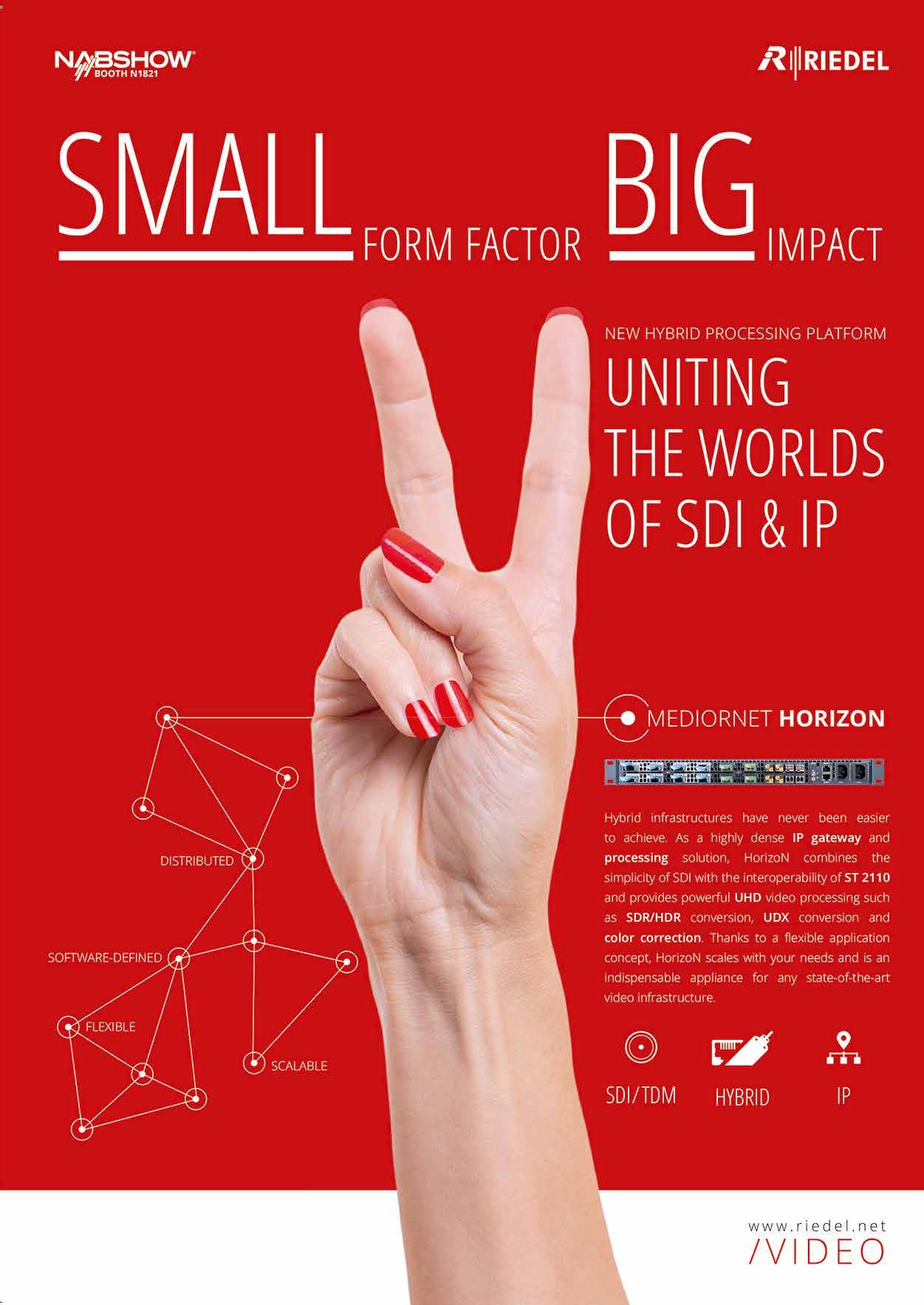

Zero Density has announced the template-based broadcast graphics, a new workflow that will try to enable broadcasters to create and control virtual studios, AR and XR through templates, in addition to on-air graphics using a single, seamless solution, as the company has claimed in a statement.
The objective of Zero Density is to elevate on-air graphics production by using Unreal Engine. The team is focused on delivering future-proof Unreal Engine-based technology to broadcasters with template-based workflow for on-air graphics, video walls, stingers, virtual studio, and AR – all using Unreal Engine 5.
Lino workflow enables template-based graphics playout for all broadcast graphics whether 2D/3D or virtual without switching between separate platforms to try
to reach turnaround graphics using Unreal Engine.
Currently, there are separate tools to create, produce and operate different types of graphics like AR graphics, stingers, leaders, and outros with varied software requirements. However, Zero Density offers resource use. Reality5 looks forward to ensure that all graphics—from AR elements to lower-thirds—adhere to brand guidelines, maintaining visual consistency across platforms and broadcasts.
The objective of this unified platform is to reduce infrastructure complexity and streamline workflows, delivering high-quality 2D/3D visuals in the upcoming post-Lino workflow era of the broadcast graphics industry.
By combining state-aware graphics with transition logic, Zero Density lookes forward
to streamlining live production, reducing operator workload. It automates updates with the changed states and makes intuitive transitions.
Zero Density will showcase the preview of this workflow at NAB Show 2025. Its booth SL4223 will host executives of the industry for Exclusive Talk Sessions throughout the show. In addition, Happy Hours on April 6 and 7, at 5 pm will try to offer attendees a space to relax.
Finally, attendees can book a meeting with Zero Density. For those who won’t be attending the NAB Show, Zero Density is organizing a virtual PostNAB Live webinar on May 22, Thursday to showcase the products of the booth. The virtual webinar has two timing options, 10 AM CET and 9 AM PT for different time zones.
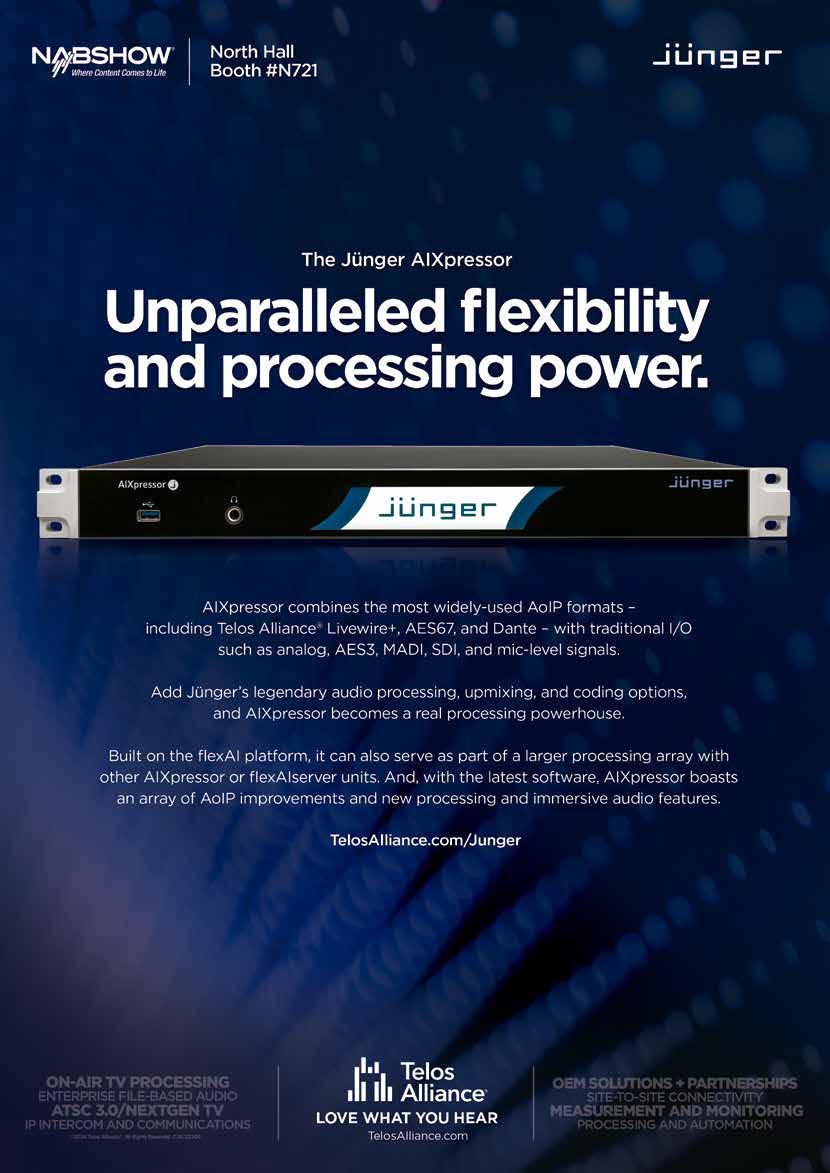
Studio Berlin has completed a modernization of its OB truck Ü2, integrating Audio-over-IP (AoIP) technology from Lawo. It incorporates a 48-fader mc²56 MKIII console, replacing the previous mc²66 mixing desk. Additionally, A__stage units have been implemented as I/O devices, along with the mc² DSP App, providing 256 DSP channels. The objective of the Lawo VSM system is to optimize control over the IP-based broadcast infrastructure, as the company claims in a statement.
This was completed in time for the 75th Berlinale, which commenced on February 13, 2025. Studio Berlin’s Ü2 truck was responsible for producing both the international film festival’s opening ceremony and the awards gala on February 22. These events were live-streamed and later broadcast with a time delay by the broadcasters Rundfunk Berlin-Brandenburg (rbb) as well as ZDF/3sat. In collaboration with X Verleih, the opening gala and premiere film were also transmitted live to seven cinemas across Germany.
This software-based solution was designed to enable scalable, decentralized signal processing, suited for modern IP-based production environments.
“With the HOME mc² DSP App, we can manage DSP resources flexibly and efficiently—an essential improvement for our
workflow. This is particularly crucial as we continue to upgrade and expand our studio facilities and control rooms,” explains Mathias Heinrich, Head of Audio at Studio Berlin. “Virtualization eliminates the need for dedicated DSP hardware, which not only saves space but also provides exceptional flexibility in configuration and scalability”.
During the transition, they had to integrate the new technology seamlessly into Ü2’s existing 3G-SDI workflow. “The challenge was to replace a wellestablished infrastructure with emerging, continuously evolving technology”, says Leonard Weißhahn, Audio Engineer at Studio Berlin. “The HOME mc² DSP App has proven to be a solid, future-proof solution: it delivers the renowned Lawo quality and performance while offering a valuable learning and development opportunity for both Lawo and Studio Berlin”.
The transition to IP technology required routing of audio signals while ensuring seamless communication between the mc²56 MKIII console, A__stage units, and the redundant
DSP App. Here, the existing Lawo VSM system provided centralized control of the entire infrastructure and enabling intuitive workflow optimizations.
“Previously, modifying signal processing during large-scale productions was a challenge. With the HOME mc² DSP App, we can make real-time adjustments as needed without reconfiguring physical hardware, saving both time and resources”, Heinrich adds.
The upgrade process for Ü2 began with the delivery of new components in calendar week 4. Through the collaboration between Studio Berlin and Lawo teams, installation, testing, configuration, and programming were completed.
The HOME mc² DSP App looks forward to enable optimized signal processing, superior audio quality, and flexible resource management. “We now have a production environment that meets current demands while being fully prepared for future developments in the broadcast sector. At the same time, we are gaining valuable insights together with Lawo as we navigate this exciting technological transition”, Weißhahn concludes.

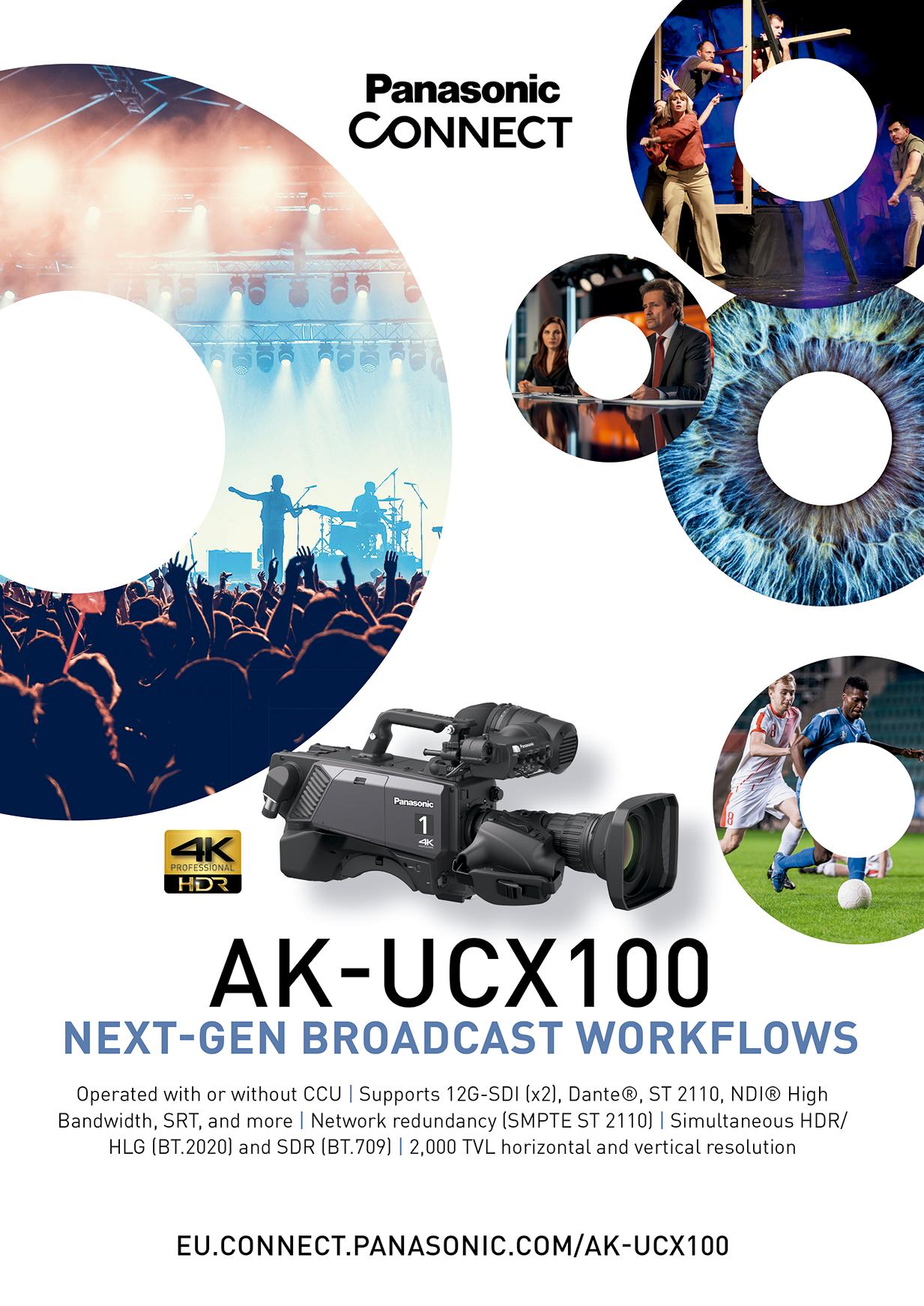
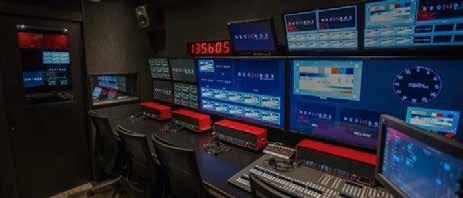
Riedel Communications has announced that Rec4Box, a production services provider, has implemented the company’s MediorNet real-time network technology across its fleet of mid-size OB trucks. By integrating video, audio, and intercom systems into a unified network running on just a few fiber strands, Riedel’s MediorNet system and its MediorNet MicroN interfaces have allowed Rec4Box to streamline on-site infrastructure with limited truck space and easier management on-site. In addition to transforming Rec4Box’s production capabilities, this strategic deployment also looked for enabling the swift restoration of operations for a major Canadian broadcaster following a catastrophic flood, as the company has claimed in a statement.
“MicroN has become our secret weapon,” said Jonathan Fortin, Founder and Chief Technology Officer at Rec4Box. “Whether it’s a small local event or a largescale broadcast, the system’s flexibility allows us to adapt quickly to different production
requirements. It has dramatically reduced our setup time and increased our operational efficiency. We can now arrive on-site, set up eight cameras, lay a single fiber, and be ready to shoot in record time. The cost savings over numerous productions throughout the year are substantial. With MicroN’s software-defined nature, we can reconfigure our setup on the fly, eliminating the need for multiple specialized devices and significantly reducing our equipment footprint.”
After experiencing issues with its previous intercom solution and large SDI router for video infrastructure, Rec4Box integrated multiple MediorNet frames and MicroN devices into its operations. Instead of relying on a single large router inside the truck, the MediorNet network operates like a distributed spider network with point-to-point connectivity.
Rec4Box’s setup includes Riedel’s 16 MicroN units for distribution across any venue as well as Riedel’s MediorNet Compact Stagebox, the RockNet audio distribution network, and the
Bolero wireless intercom. Artist G2 frames with numerous panels and 40 Bolero beltpacks are distributed across two 26-foot trucks, one 40-foot truck, and two complete fly packs. Designed with built-in redundancy, the MediorNet network’s objective was to enable the team to prioritize critical signals and add more fiber cables for increased backup options.
The versatility and reliability of Riedel’s MediorNet system were tested when a Canadian broadcaster faced a flooding incident that threatened to halt its operations and forced a complete move within 24 hours. Leveraging the broadcaster’s existing fiber infrastructure and expertise, Rec4Box implemented Riedel’s MediorNet technology in just two to three days, creating a distributed network architecture for the broadcaster’s multipleroom setup. The system allowed the broadcaster to relocate, get its entire production center up and running, and resume operations quickly. Rec4Box later lent the broadcaster two MicroN units, which were used for approximately three weeks.
“When the broadcaster needed to move their entire operation within a day, it seemed impossible,” Fortin said. “But with Riedel’s MicroN and MediorNet systems, we were able to provide a solution that not only met their immediate needs but also offered a more efficient, distributed architecture for their future operations.”

NEP Denali has announced the installation of a 144-fader Argo Q console and ImPulse IP core in its 53’ Gold remote production unit. The objective of the installation is to offer the clients more immersive and personalised formats, as the company has claimed in a statement.
With the additions of more available faders in the same compact space, the refurbishment will try to keep up with changing requirements, simplify existing workflows and develop relationships with a wider range of content providers and clients.
The company explains that the new Argo Q mixing system is designed to deliver a high level of flexibility previously untapped in broadcast TV audio.
“Entertainment is all about the operator experience and the audio control room is very similar to a recording studio environment”, says James Mullen, Audio Guarantee for live and taped events with NEP Denali. “Many entertainment productions require the A1 to mix multiple band stages in addition to normal production audio and playback elements. Additional requirements like remote production injections means the audio team needs to land and monitor many incoming and outgoing signals. The Argo Q console’s fader count and corresponding metering means this can be accomplished easily”.
The company’s Gold remote vehicle is its one of two original trucks and Mullen affirms that its recently upgraded audio system gives Denali the ability to adapt to more demanding shows.
“The previous audio system had become problematic and there were many things we just couldn’t do which are inherently simple on the Argo Q. Things like providing individual tone breaks for transmission and reconfiguring bus widths are very simple on a Calrec. It enables us to keep up with the current trends of providing multiple mixes to accommodate main and international 5.1 programs, as well as streaming in immersive and descriptive audio formats; it delivers a feature-rich platform to keep the technology out of the way of the art”, he adds. “The configurable nature of the Argo surface, custom wilds panels and fader option keys, combined with its immense horsepower, means it stands alone in the broadcast audio field. One of our favourite features is the remote
access to the surface given to the A1 before the show loads in. They can comfortably program their show on the system from any location, whether that is at home, a hotel or on a plane”.
The truck was recently used at February’s SAG Awards in Los Angeles.
“More and more streaming platforms are picking up prestigious entertainment events from traditional over the air broadcasters, such as Netflix’s live coverage of this month’s SAG Awards”, says Calrec US Regional Sales Manager Helen Carr.
“The implications for audio are significant and it is crucial that companies like NEP Denali can easily accommodate whatever audio formats are required, whether it is traditional stereo, Dolby Atmos, or descriptive audio formats. Calrec’s Argo technology makes this easier and helps broadcast suppliers to seamlessly adapt to these new ways of working, whatever the demands are”.

Harmonic has announced its latest video streaming innovation with the launch of new origin capabilities. Service providers and broadcasters can tap into the new origin features through Harmonic’s VOS family and XOS Advanced Media Processor to try to optimize efficiency and flexibility, as the company has claimed in a statement.
Harmonic’s new origin capabilities combine cloud and on-premises storage by leveraging VOS360 Media SaaS and VOS Media Software. This hybrid approach taps into the cloud for less frequently
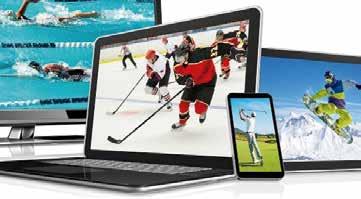
accessed content while using on-premises storage for video assets. Older content, including nPVR assets, is automatically moved to cloud storage.
The cloud-native solution utilizes the same UI for all media processing capabilities. Service providers can scale storage based on demand by utilizing on-premises infrastructure for fixed workloads and leveraging cloud scalability for large asset repositories. The objective of this strategy is to try to improve flexibility and reduces cloud storage costs.
Additionally, the company is also introducing live and time-shift origin capabilities within its XOS Advanced Media Processor. It collapeses the origin functionality into the XOS Media Processor to try to let broadcasters stream live content directly to CDNs using a single appliance.
“We’re redefining what’s possible with a streaming solution that combines everything from playout to compression, origin and delivery”, said Gil Rudge, senior vice president, products and Americas sales, video business at Harmonic.
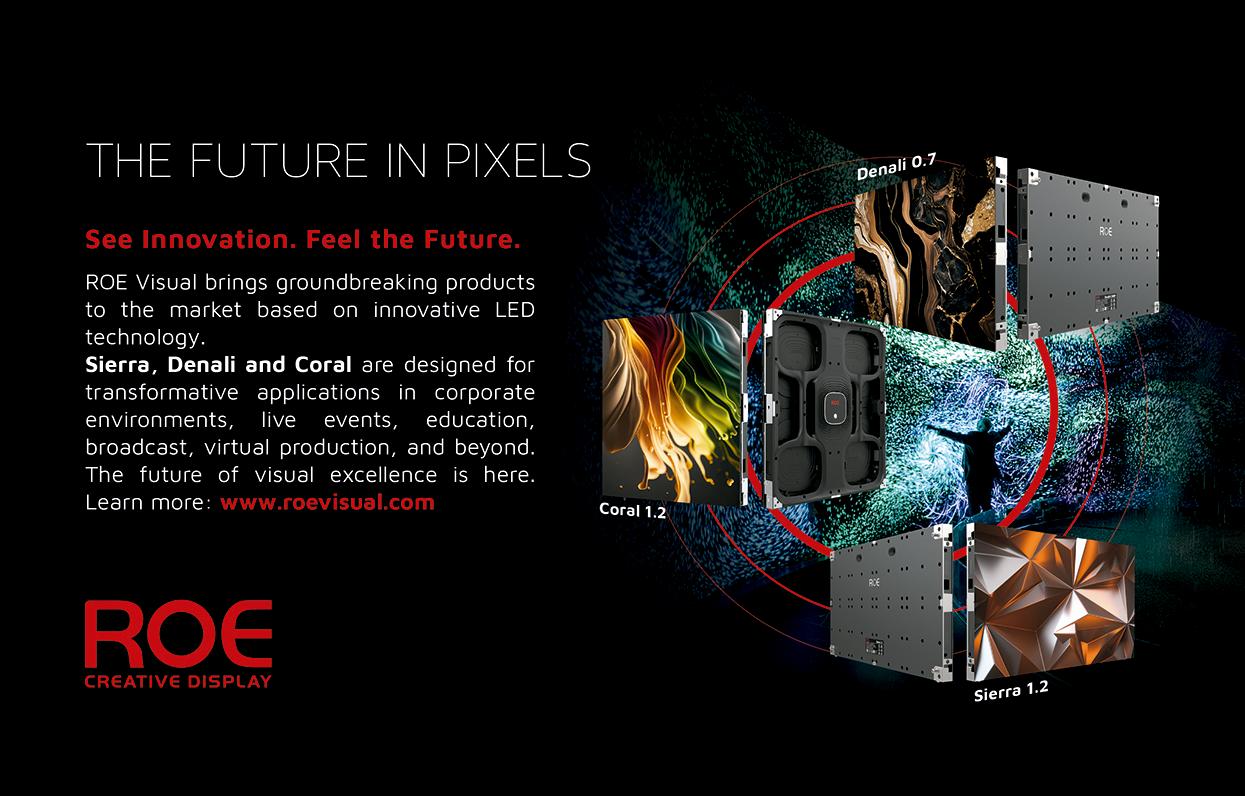
The Macau Grand Prix returned in 2024 with a showcase of Formula 3, GT, and touring car races. This year, the Guia Circuit underwent an AV upgrade, through Kiloview’s state-of-the-art NDI AV-over-IP solution.
Collaborating with the Macau SAR Government Sports Bureau, the Macau Grand Prix
Organizing Committee, and the Automobile General Association Macau-China (AAMC), Kiloview delivered a broadcast-grade system with the objective of redefining the event’s video infrastructure, as the company has claimed in a statement.
The upgrade addressed had to make sure that it could offer seamless signal transmission, enhanced scalability, and unparalleled reliability for live broadcasting, refereeing, and post-production. A case study on their AV upgrade explains how it was made.
The circuit presented the next features for AV infrastructure:
› Dense Camera Coverage and Multiple Signal Sources: Over 50 cameras were positioned to try to capture every moment. Additionally, NDI PTZ cameras were deployed for enhanced monitoring, bringing more than 60 HD and 4K signals.
› Complex Signal Management for Multi-Scenario Coordination: The event required real-time
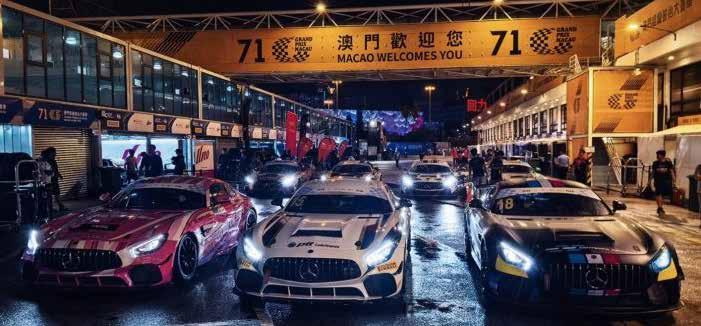
video distribution to multiple operational hubs, including the control center, announcers’ room, judges’ office, commentators’ room, live broadcast room, and security room.
› Uncompromising Security and Stability: The Macau Grand Prix demanded broadcast-grade reliability.
› Modernizing an Aging Venue: The circuit’s legacy baseband video system, reliant on extensive cabling and complex setups, was no longer viable. Kiloview’s IP-based solution had to provide the flexibility, scalability, and cost-effectiveness needed to future-proof the venue.
Kiloview’s NDI AV-over-IP Solution
The components of Kiloview’s solutions were:
› NDI N60 Converter: Signal Conversion Kiloview’s NDI N60 converters were deployed
to replace traditional HDMI baseband signals.
› NDI Core Max: It played a role in managing multi-channel signal switching and distribution for NDI in and out. A redundant backup system was also deployed to try to guarantee uninterrupted operation.
› NDI CUBE R1: It was deployed to capture NDI streams from the Core Max.
› Kiloview Multiview Pro: It provided flexible, server-based monitoring for commentary rooms, live broadcast studios, and other critical areas. On-site personnel could access live feeds via browsers on mobile devices or computers.
› Centralized Management with KiloLink Server Pro: Its objective was to enable real-time status monitoring, parameter adjustments, and one-click firmware updates. The system also integrated Kiloview’s Intercom Server Pro.
Mediaset and Evertz have collaborated to design, deploy and launch Mediaset’s next channel origination and playout solution. The solution is a low latency and SMPTE ST-2110based design, utilizing Evertz Mediator automation/MAM, Overture-RT-LIVE integrated playout servers, MAGNUM-OS orchestration, VUE control interfaces and more, with the objective of delivering superior efficiencies across Mediaset’s broadcast operations, as Evertz has claimed in a statement.
The system design looks forward to deliver a better resilience by adopting a highly distributed architecture within and across, multiple sites while maintaining full synchronization. Supporting over 26 channels, the system delivers features and functions supporting highly dynamic
live Sports/News channels, in addition to thematic channels. Mediator provides system automation but also MAM functions to streamline and automate content ingest, control and scheduling workflows for a multitude of different content types and signal sources.

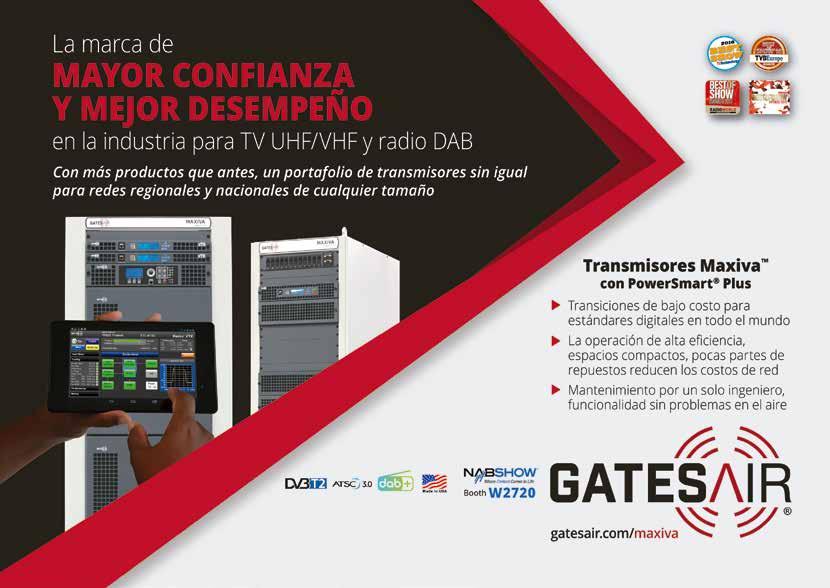
LYNX Technik has announced the appointment of Dr. Markus Motzko as Head of Production and Administration. The objective of its new role is to improve production efficiency, manage supply chain operations, and oversee administrative functions, as the company has claimed in a statement.
Dr. Motzko has experience in production processes, manufacturing optimization, and technical leadership, with a background in the semiconductor

Mediagenix has announced the appointment of Wael Yasin as Sales Director Central Europe. Its objective is to focus on the strategic expansion of the company including the continuous recruitment, underscoring its dedication to shaping the next generation of cloud and software media solutions, as Mediagenix has claimed in a statement.
Wael will focus on customers and prospects, on business strategies, building partnerships with media organizations, including broadcasters, VOD/ OTT platforms, telcos, studios and distribution groups across all countries in Central Europe.
and medical technology industries. Before joining LYNX Technik, he worked at Littelfuse –IXYS Semiconductor in Germany, where he introduced new production processes, supported manufacturing operations, led product development of a medical chip product line, and provided technical support.
“I’m thrilled to join LYNX Technik, a company known for its innovation and commitment to excellence”, said Dr. Motzko. “My goal is to streamline operations, improve
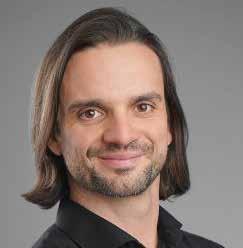
cost efficiency, and refine our production processes to make us even stronger. I look forward to working closely with the team to drive continuous improvement and set us up for long-term success”.
As Head of Production and Administration, he’ll focus on streamlining manufacturing processes, and keeping operations cost-effective. Additionally, he will handle internal operations, financial oversight, and compliance efforts.
Wael is looking forward to help clients optimize their media supply chain operations and unlock new revenue opportunities using Mediagenix’s modular SaaS solutions.
“Mediagenix is expanding its team with top industry experts, reinforcing our commitment to delivering content-centric, cloud based workflows to improve business outcomes from optimizing content creation, commissioning and acquisition through to audience experience,” said Francoise Semin, Chief Commercial Officer, Mediagenix. “With Wael’s extensive experience, our customers gain actionable
insights into the true potential of Mediagenix’s cloud-based workflows.”
Previously, Wael held a role at Qvest as Enterprise Account Manager, where he worked across the media value chain, supporting clients in adopting cutting-edge technologies.
“I am eager to collaborate with our talented team and contribute to our continued success in the evolving broadcast and OTT landscape,” said Wael. “With rapid industry transformation, I look forward to helping clients streamline workflows, maximize content impact, and stay ahead in a competitive landscape.”
Avid has announced the expansion of its executive leadership team (ELT) with the appointment of Tom Sharma as Chief Technology Officer, Dominic Constandi as Chief Customer Officer, and Kenna Hilburn as Senior Vice President of Product. The objective of these incorporations is focused on delivering solutions that empower creators. The new hires will join Avid’s existing ELT and broaden its base, as the company has claimed in a statement.
“With the appointment of Tom, Dominic and Kenna we now have a world-class leadership team that will steer our vision, and support our focus on providing the most complete and flexible end-to-end solutions,” said Avid CEO, Wellford Dillard. “Their expertise and leadership will enable us to deliver for our customers and empower greater creators, delivering the tools, workflows, and services they need to deliver content that reaches and expands audiences.”
Tom Sharma, Chief Technology Officer, has been working in industry-shaping innovations, including the launch of Hulu and advancements at NBCUniversal. Most recently, he was an advisor to private equity funds, providing guidance on product, technology and growth initiatives. Previously he served as the Chief Product

Officer at Integral Ad Science (IAS). Sharma has held senior leadership positions in media & entertainment, video streaming and ad tech, building high-performing global engineering and product teams. At Avid, he will be responsible for driving innovation and technology to try to create value for customers.
Dominic Constandi, Chief Customer Officer, has worked over two decades in customer and professional services. He led customer teams at ZoomInfo and Sovos, where he focused on driving operational efficiency, and improving retention and revenue growth. At Avid, Constandi will try to strength Avid’s customer-first culture.
Kenna Hilburn, Senior Vice President of Product, has over 17 years of experience in the digital media and marketing Software-as-a-Service (SaaS) industries. She was a former television producer who worked
on aligning product strategies with customer needs to try to reach innovation. She started her career at a national lifestyle network before moving into the digital commerce space, where she built and led video strategies for retailers like Petco. Most recently, at Marigold, she spearheaded cross-functional product operations, addressing customer pain points and business goals. At Avid, she will be leading the product management teams, to try to acquire an unified and strategic approach to delivering cutting-edge solutions.
Wellford added, “Avid is excited to welcome these highly experienced leaders to our company. They will help us build upon a heritage of delivering unmatched audio and video innovation and leading solutions to meet ever-evolving market needs, now and into the future”.

Las Vegas Convention Center will host, from April 5 to 9, one of the leading global broadcast events, with an expected attendance of 65,000 visitors and 1,300 exhibitors
The NAB Show returns to Las Vegas once again. The iconic city’s Convention Center will host, from April 5 to 9, one of the foremost global events in the broadcast industry. With an anticipated attendance of 65,000 visitors from 163 countries, the event will offer professionals the opportunity to experience firsthand the accelerated transformation taking place within the sector, which we have been reporting on monthly in the pages of TM BROADCAST.
The exhibition, featuring around 1,300 exhibitors spread across 185,000 square meters, will be divided into three segments: "Connect," covering everything related to content distribution and delivery; "Monetize," focusing on monetization strategies; and "Create," aimed at content creators.
This year's key trends around which the event will revolve include artificial intelligence, cloud
technology, streaming, and sports. Another thematic segment will be "Creator Economy," which will address business models related to content creation. Additionally, this edition will feature a "Sports Summit," a new program created to explore the trends, technologies, and opportunities that are transforming the fan experience at live events, reshaping the business, and redefining the television rights landscape.
To provide attendees with an in-depth view of sports productions, which continue to grow and reach new audiences, the event will offer a series of sessions, conferences, and case studies every day. There will also be spaces designed to help visitors fully engage with these environments, as well as the latest tools and technologies needed for an operations center.
For instance, Microsoft will use AI to power a fully personalized sports broadcasting area tailored to individual viewer preferences. On the other hand, motor sports enthusiasts will have the chance to experience the thrill of a race firsthand through AWS Formula 1 simulators.
The program will kick off on Thursday, March 3, with workshops and masterclasses hosted by NAB in collaboration with Future Media Concepts (FMC). From April 5, various sessions focused on specific topics will take place. On Sunday, April 6, an exhibition hall will
open, where companies will present their vision and advancements on trends such as VR/AR (Virtual Reality/Augmented Reality), AI integration and machine learning in content creation and distribution, and the impact of 5G. The exhibition will also feature spaces dedicated to the film industry, such as "CineCentral."
While sports will receive special attention during the exhibition, it's important to mention the profound impact AI is having on these productions, as well as on broadcast in general. Companies are rushing to incorporate this technology into their workflows, prompting manufacturers to redesign the products and services they offer.
In this context, the event will collaborate with Propel ME, a startup hub that will present AI-driven technological solutions from companies transforming the content creation sector. Propel ME has also formed a partnership with FBRC.ai to foster connections between emerging companies
leading innovation and large multinational corporations.
In line with this, one of the event's innovations will be the Startup Stage, a space for entrepreneurs and professionals to discuss "hybrid AI production," focusing on how this technological innovation can improve production workflows. They will also explore the "evolution of consumer experiences" and its impact on content distribution and production.
This area will also host a workshop titled "Getting Started with Generative AI," offering creators and tech experts a hands-on experience with the tools accelerating the creation of characters, environments, and assets.
In the new Startup Showcase, brands will have the opportunity to take the stage for quick presentations about their products and how they are adapting to the current ecosystem. The audience will vote for the most promising one, which will then have the chance to
participate in a "Fireside Chat," a space where they can share the story behind their company and the challenges they faced during the development and expansion of their innovations.
Regarding content creators, a highlight is Creator Lab. After its successful debut
at the 2024 edition, this space will return to the show, including several improvements. In tune with the industry's evolving needs, it will offer insights and demonstrations related to incorporating AI as a creative partner, the tools and techniques necessary for capturing standout images, and the
most relevant strategies for winning the algorithm battle, among other topics.
Once again, NAB Show aims to be a magnet for industry professionals looking to stay ahead in the tech race, as well as a gathering place for global visionaries with new ideas to create and deliver conten
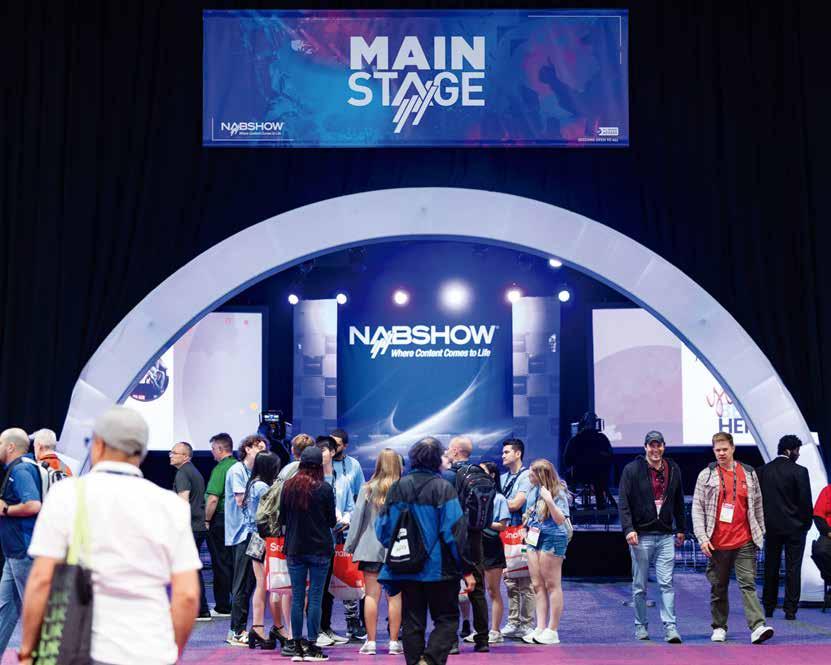
Below, we present a selection of the main innovations that exhibitors will showcase at the upcoming NAB Show, listed alphabetically by brand for ease of reading. With the aim of providing a varied list that serves as a useful guide for event attendees, we have included both established companies and smaller firms whose portfolios have sparked the interest of our editorial team.
AEQ will be offering some of its latest innovations, which are: Xplorer MAX, a wireless Intercom beltpack based on high-performance digital radio technology, with four direct access keys organized in up to 4 pages, two additional programmable keys, and a multi-function display, and Capitol IP Plus, a digital audio broadcast mixing console, specifically designed for ON AIR control but adapts to a diversity of workflows and functionalities.
Booth Location: N2648
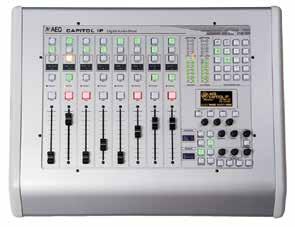
AJA will be exhibiting its latest innovations, including KONA IP25, the company’s nextgen IP video and audio I/O card. It boasts 10/25GbE SFP connectivity, multichannel UltraHD support, and a host of other powerful features designed to meet the demands of evolving full and hybrid SMPTE ST 2110 ecosystems.
Booth Location: SL3310
Appear will show the two new additions to its product portfolio of live media production solutions:
› X5, a compact extension of the X Platform: designed for live production, remote contribution, and cloud-based workflows. Includes support for AVC & HEVC encoding and decoding, uncompressed workflows (SDI and ST2110), Appear’s hardware SRT (aSRT), and security features.
› New upgrades for X Platform Family: 100G Switch Module that expands network capacity for media transport, compliant with SMPTE RP2129 Trust Boundary, and an increased JPEG XS SDI Density, doubled from 4 to 8 channels per module.
Booth Location: W2042
Atom will show its three new cameras:
› AtomTwo
› AtomSSM501 C-& B4-Mount: can record up to 120 sec. of 500 fps. From now on, photographers will be able to connect the Canon and Fujinon B4 lenses directly.
› AtomSSM502 C-& B4-Mount: can record up to 140 min. of 500 fps, and it also allows the connection with Canon and Fujinon B4 lenses directly.
Booth Location: N1807
The Alliance for IP Media Solutions (AIMS), Advanced Media Workflow Association (AMWA), and the Video Services Forum (VSF) will return their IP Showcase to focus on the growing convergence of broadcast and Pro AV technologies.
As in previous years, one of its components will be the IP Showcase Theater, where professionals from the industry will be giving 16 presentations that will include a roadmap presentation for IPMX — outlining key milestones, including the first product validation tests scheduled for Q3 2025 — the control plane, and the relationship between IPMX and AES67 and SMPTE 2110. Additional topics will present media facilities and cloud integration, live production, timing and synchronization, and security in IP-based workflows, as well as case studies on media organization and facilities that have shifted to IP. Finally, it will feature an IPMX demo space in booth W2843, across the aisle from the Tech Chat Stage, where attendees can see live demonstrations of IPMX-ready products, from a NMOS controller and multiviewer and integrations with existing AV-over-IP technology. In addition, meeting room W317 will be available for training, standardsrelated meetings, further demonstrations of IPMX, and more.
Aximmetry, alongside camera tracking partner Vive Mars, will offer a demonstration of sports and esports broadcast-themed, green screen and AR demo.
› Volinga Suite: will showcase Radiance Fields reconstructed by AI as a Gaussian splat. Assets were captured and provided by Prism AI in collaboration with Clear Angle Studios. It provides UE plugin compatibility that enables incorporating AI-generated 3D assets from 2D images into virtual productions.
› Aximmetry Eye: for iOS, enables users to stream their mobile camera feed directly into Aximmetry, providing position and direction data for talent, object, or camera tracking. Moreover, it transforms a mobile phone into a real-time preview monitor for previsualisation. It seamlessly integrates the Aximmetry Virtual Production Platform to turn the smarthphone into a content hub.
› Aximmetry Gateway: a new application capable of transmitting video, tracking, and controller data to and/or receiving video from another computer. It can be used in cases where the device inputs and outputs are on one computer but the production is done on a different one.
› MOS Integration: to seamlessly connect with various newsroom systems and hardware in the broadcast environment. This integration will be implemented at the SL8507 booth of SNEWS Newsroom Solution.
Booth Location: W4129
Black Box will highlight its latest products designed to offer secure, flexible, and scalable workflows with industry low IP bandwidth usage. Some of these are:
› Emerald KVM-Over-IP Platform: scalable universal access system, allowing connection to physical and virtual machines, anytime IP access over an existing IP network, WAN, or the internet. It features flexibility and low bandwidth usage to state-of-the-art signal routing and centralized management. Interoperability between 4K and HD video and one-touch control room setups combine with a high degree of automation through Emerald's APIs.
› Emerald DESKVUE PE: Multi-Source IP KVM receiver raises the bar for highprecision performance while enhancing collaborative workflows. All systems are displayed as individual windows on up to four 4K monitors, including one ultrawide curved 5K monitor. Its software, AV WALL, has been upgraded by the company and adds a 4x4 video wall solution.
› Emerald GE Gateway: connects to the Emerald IP-based KVM network to give users simultaneous virtual machine (VM) connectivity with RDP or PCoIP (ultra) VM sharing. Up to eight users can access up to eight VM sessions through a single unit, saving the cost of additional RDP or PCoIP clients.
› Black Box Remote App: a software-based solution that turns a user's laptop or
computer into a KVM receiver to give authorized users access to sources across the KVM network.
Booth Location: SL10616
Blackmagic will highlight its latest products. Some of them are: DaVinci Resolve
Replay Solution, an editor with multi user collaboration features, color correction, visual effects and audio post production; URSA Cine 12K, a large format digital film camera with RGBW 36 x 24mm sensor, 16 stops of dynamic range and Blackmagic RAW syncing to DaVinci Resolve; URSA Cine 17K 65, a format RGBW 17520 x 8040 sensor with larger photo-sites for 16 stops of dynamic range, interchangeable PL, LPL and Hasselblad lens mounts, and industry standard Lemo and Fischer connections; and URSA Cine Immersive, which supports 8K stereoscopic 3D capture and editing, to create Apple Immersive Video for Apple Vision Pro.
Booth Location: SL5005
Bitcentral will unveil its latest AI-powered innovations to try to demonstrate how broadcasters and media organizations can enhance efficiency, maximize revenue, and streamline content operations.
This year’s showcase is Fusion Insights, an AI-driven tool that gives a faster and more intuitive access to the libraries of video content. By leveraging Retrieval-Augmented Generation (RAG) technology, it empowers
media teams to locate, analyze, and repurpose assets faster. Visitors will also experience:
› ViewNexa: a solution that enables media companies to distribute and monetize content across AVOD, SVOD, and FAST models.
› Fusion Hybrid Storage (FHS): offers an approach to cloud and on-premise storage, ensuring security, scalability, and accessibility for media organizations.
› Fusion Gateway: brings advanced automation and AI integration to media asset management, streamlining content ingestion, metadata enrichment, and asset retrieval for more intelligent workflows.
Bitmovin and Ad Insertion Platform will demonstrate their joint solution designed to ensure seamless, high-quality ad delivery and optimize viewing experiences across streaming environments.
Bitmovin’s Player has been integrated with AIP’s AIP’s DAIConnect for Server-Side Ad Insertion (SSAI) and its new product, AdBlendr, for Server-Guided Ad Insertion (SGAI). This solution supports multihour manifests (up to 24 hours) without increasing computing or bandwidth costs. Ads are requested only when a break is about to air, and with Bitmovin’s Player, AIP’s SGAI allows for control over ad encoding and transcoding, and it offers control over ad delivery by transcoding ad creatives into HLS format. It includes low-latency, configurable AB, and Stream Lab, and supports device
compatibility across Web, Android, iOS, Roku, and smart TVs. It is based on an API approach.
Brainstorm will showcase its advancements in Virtual Production, Real-Time 3D Graphics, Newsroom Workflows, and Immersive Presentations. Also, the company will offer a demonstration of Suite 6.2, the latest version of InfinitySet, Aston, and eStudio. The booth will feature a data-driven, realtime augmented reality (AR) and virtual production weather show, powered by InfinitySet using Unreal Engine 5.
› Cameras mounted on XD Motion’s robotic systems: a collaboration made with the objective of offering a production environment that can be fully controlled from a production suite, allowing a single workstation to manage virtual production across LED and chroma sets, handle multiple camera inputs, and incorporate real-time AR graphics.
› Shared both with Accuweather: presenting the latest results of their partnership in next-generation, real-time 3D weather applications. As a result, Brainstorm’s AstonWeather integrates Accuweather’s data for 2D, 3D, and AR visualization.
› Aston: 2D/3D motion graphics creation features capabilities in data-driven, in-context AR graphics. These can be embedded into immersive virtual environments, including Unreal Engine (UE) scenes, and enables multi-channel graphics and collaborative workflows.
› Edison Ecosystem: demonstration of its latest developments including EdisonGO, a custom-built capture environment that provides video and tracking information from an iPad, or Edison OnCloud, a subscription-based web service that allows users to create immersive presentations on the cloud.
Booth Location: SL2716
Chyron will highlight its range of products and innovations in total cost of ownership (TCO), converged technologies, and cutting-edge live production tools.
› News Innovation: Camio integrates NRCS and NLE platforms to support cloudbased workflows and automated visual storytelling. Chyron VSAR will also reveal new features and demonstrations of its integration with Weather.
› Sports Broadcasts: Prime 5.1, Paint 10.0, and VP 8.0 bring new replay, virtual graphics, and tracking capabilities for sports productions.
› Cloud-Based Production: Chyron Live offers a cloud-native solution for remote and hybrid production environments, including video switching, motion graphics, and live streaming.
› ZXY Tracking Technology: Real-time player tracking and data visualization for betting applications and sports broadcasting.
Booth Location: SL 1511
Clear-Com will explore the next generation of live production communication through its solutions, including the FreeSpeak Icon beltpack, the Arcadia Central Station, Gen-IC, Agent-IC mobile app, and Station-IC virtual desktop clients, and other updates designed to streamline workflows.
› FreeSpeak Icon beltpack: RF capabilities on 1.9 GHz (DECT), nine configurable buttons, four individual channel volume controls, and Bluetooth 5.3 connectivity. Designed for multiple applications across different verticals, it integrates with Arcadia Central Station and Eclipse HX digital matrix.
› Arcadia Central Station: scalable, all-in-one intercom solution that connects wired and wireless communication workflows.
› EHX v14: software release, which introduces features that simplify complex system setups and enhance IP capabilities with FreeSpeak Icon connectivity.
Booth Location: N2147
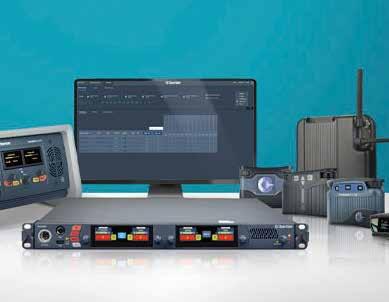
Cinegy will offer its latest innovations, which include:
› Cinegy Encode 1000: a compact appliance designed to offer flexible in/out configurations supporting SRT, NDI, and traditional broadcast formats.
› AI-powered Cinegy Subtitling Service: transcribes spoken language into DVB or teletext subtitles in real-time with accuracy across 100 languages. The technology operates locally without requiring internet connectivity.
› Software defined solutions: Cinegy Multiviewer for comprehensive signal monitoring, Cinegy Capture PRO for reliable multi-channel ingest, and Cinegy Air PRO for broadcast playout.
Booth Location: SL3606
Dream Chip Technologies will launch its latest innovation, the AtomTwo camera, in a self-contained package of 29mm x 29mm x 33mm, which offers HDR quality with dynamic range. The integral 4.5mm lens provides a 90˚ field of view, available for body-worn ref cams as well as fixed POV uses. Weighing 55g, including lens and stereo microphone, it is also designed for mounting on a miniature drone, giving broadcasters viewpoints. The company considers it the smallest camera with a global shutter available on the market today. It features colour reproduction, global shutter and wide colour gamut.
Booth Location: N1807
Edit Share will show its new innovations designed for media storage, workflow efficiency, and AI-driven content management. The company has been upgrading its media management tools to streamline how media professionals handle, process, and locate their assets. Additionally, it is focused on enhancing speed and performance across the product line, alongside OS upgrades that are trying to improve reliability and ease of use. Finally, they will be offering a live presentation to showcase the direct integration of EditShare’s performance NVMe storage with cutting-edge film scanning technology from Lasergraphics.
Booth Location: SL4216
EVS will showcase its latest advancements in live video production technology.
› MediaInfra: Neuron’s Bridge and Convert identities will provide an increase in IPstream capacity and improve redundancy, Neuron View features an improved webbased multiview editor, and Cerebrum incorporates native software-defined networking (SDN) capabilities. The latest update also features a more advanced distributed client-server architecture, supporting distributed hosting of control panels and web clients, as well as single sign-on (SSO) and reverse proxy functionalities. Additionally, they will also offer Strada, a new routing system designed for hybrid environments, focused on interoperability between IDE and IP systems.
› LiveCeption: XtraMotion Version 3.0 offers a Deblur and a cinematic effect, and LSM-VIA Playback System introduces a new zoom feature with EVS precision
› MediaCeption: from its acquisition of MOG Technologies, EVS Move I/O, an ingestion system for news and entertainment production, and Move UP, a scalable transcoding engine.
Booth Location: SL3316
FOR-A America will introduce its Dante audio integration with its product line up, including its range of broadcast and professional video production switchers.
› FOR-A HVS-190 video switcher: new software-based technology still to be announced will also include Dante’s production switcher and a platform that consolidates functions into one machine.
The MFR-3100EX all-in-one production center will feature Dante support soon as well.
› HVS-DNT: an optional Dante I/O module for the HVS-190S/190I and HVS-490 video switchers, supports up to 64 channels of Dante audio input/output and selects signals from the Dante network and integrates them into the ancillary data functions of the host video switcher. The module includes two SDI connections that can be independently configured as inputs or outputs, enabling the demultiplexing of signals from SDI to Dante or the multiplexing of signals from Dante to SDI,
depending on the user's configuration. Additionally, there are channel-specific audio level controls and delay controls.
The company will also hold a NAB preview, “FOR-A Connect”, on Saturday, April 5th at 3pm in Room S232 in the South Hall.
Booth Location: N707
Fujifilm will be presenting at the event some of its products, including a fine range of lenses and recording supports to meet the demands of the broadcast and film industry. The company will also present the CineCentral Craft Clinic on Sunday 6 at 12:15pm, at booth N1449”.
Booth Location: N1239 and N1439
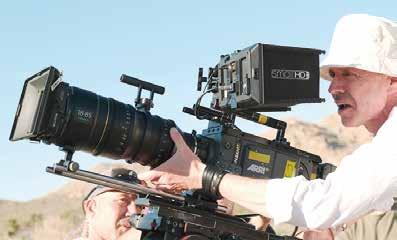
GatesAir will unveil its latest products at the event. Some of the company’s solutions include: ATSC 3.0, native IP-based digital broadcast standard, and a convergence of broadcast and broadband; its Maxiva OP Series of air- and liquid-cooled transmitters, ranging from 200W to 43kW average DTV power, or up to 84kW peak sync with analog
modulation; and transmitters, softwaredefined exciters and cloud-based video and audio transport solutions for content delivery.
Booth Location: W2720
Glensound will bring its latest software solutions based on open standards including Dante, Ravenna and Milan AVB.
› Beatrice R12: a rack-mount intercom designed to deliver functionality in applications with a modest requirement for users and channels. The 12-channel system identifies sources and destinations through Dante and displays them on-screen on the user panel.
› Ravenna will launch a new version of Glensound Inferno to make it inherently AES67 and SMPTE ST2110-30 compliant. It also provides for full remote control where required.
› Parliamentary Broadcast System (PBS: an integrated Dante solution for audio coverage in legislatures and debating chambers.It incorporates intelligent features, including compensating for the delay between microphones and loudspeakers. The platform includes the functionality required for debating chambers, including card readers for member identification and electronic voting.
› GTM Mobil: featuring a USB-C connection for a mobile device, enables integration of mobile games into the production environment. The cable connection
provides data reliability, as well as charging the device.
Booth Location: N2270
Grass Valley has organized the GV Forum 2025: Leading the Media Revolution, an event designed to discuss the future of media technology. Its program will address strategic business challenges and technical innovations. It includes:
› Industry Leadership Perspectives – To focus on global challenges and emerging trends.
› Cutting-Edge Technology – A dive into the latest advancements in system deployments, cloud-based solutions, and next-generation workflows.
› Engaging Panel Discussions – Executives and technologists will share strategies for navigating disruption and driving success.
› Networking & Collaboration – To foster connections between industry leaders.
Booth Location: N506
Haivision will showcase its latest live video contribution solutions, including:
› Mobile Video Transmission with Haivision Pro: for high-quality video over IP and cellular networks in HD, 4K, and HDR from virtually any location.
› Efficient SRT Workflows with the Makito X4 Encoder and Decoder: including SMPTE ST 2110 with NMOS for IP-based production workflows, along with support for the SRT video protocol.
› Smartphone Live Video Contribution Over 5G with MoJoPro app: features remote-control capabilities for camera settings, delivering greater flexibility for remote productions.
› Cloud-Based Control for Contribution with Haivision Hub 360: simplifies the configuration, control, and monitoring of geographically distributed live contribution encoders, transmitters, and mobile apps.
› Live Sports and Private 5G Zone: solutions for large-scale live video transmission over private 5G networks.
Ikegami Electronics will show the new addition to its range of broadcast-quality television production, control, and monitoring equipment. The IPX-100 is an IP gateway for the company’s UNICAM XE and UNICAM HD cameras. It allows broadcast content creators to adopt SMPTE ST 2110 IP remote operation while supporting the familiar workflow of baseband live production. Each camera can feed into an IPX-100 gateway via up to 2 miles of conventional SMPTE-hybrid fiber cable. The camera head is powered by the IPX-100. It can be configured via a series of license-key options to suit specific requirements as or where needed. Among these are:
› A gateway function for 3G/HD-SDI input/ output enabling SDI-to-IP and IP-to-SDI conversion, supporting external devices at the IPX-100 location.
› JPEG XS (SMPTE ST2110-22 compliant) encoding and decoding. The IPX-100 provides selectable JPEG XS data rates in four steps: High (1/5), Mid (1/8), Low (1/16), and
Mini (1/32). The JPEG XS option also provides support for Video Trunk and QTV in 4K.
› 3D-LUT output for HD simulcasting. This is compatible with 33 x 33 x 33 or 65 x 65 x 65 .cube files created using DaVinci Resolve and HD to 4K-UHD upscaling.
› A PC running Ikegami XE Web View software can simultaneously be coupled to the camera control network via an optional Ikegami Protocol Gateway, enabling initial setup and supervision of the ST 2110 interface. Automated MoIP network setup can be performed using an NMOS IS-04/ IS-05 feed from the IPX-100 to a local or remote central automation system.
› Video formats supported as standard include UHD (2160p59.94/50), HD (1080p59.94/50, 1080i 59.94/50, and HD-HFR in 1080i/p (2x/3x/4x speed) and 720p59.94/50). Other supported standards include SMPTE ST 2022-7 redundancy, ST2110-10, ST 2110-20/-21/-22/-30/-40, and ST 2059-1/2 PTP synchronization and NMOS IS-04/-IS05 control protocols.
› An HD-SDI video monitoring output allows a direct connection of a field monitor to the IPX-100.
Booth Location: N1539
IMAX Corporation will debut its latest advancements for premium live streaming, introducing new AI-driven technologies designed to dramatically enhance the quality of live-streamed content. These innovations are designed to leverage IMAX VisionScience, the company’s proprietary AI-powered visual platform, to deliver visuals and increase viewer engagement-.
The company will showcase how its technology enhances real-time visual clarity, brightness, and overall viewer enjoyment, whether streamed directly to consumers or distributed via cloud-based platforms.
Finally, it will participate in the three-day event NAB Sports Summit.
Booth Location: W1401
Infiled will showcase its latest innovations in LED display technology, tailored for broadcast, media, and entertainment professionals. Some of its highlights are:
› OL Series integrated screen: featuring AI motion compensation, AI pixel optimization, and AI voice control
› WT0.9 MIP: a display with a 0.9mm pixel pitch, designed to deliver colour consistency, grayscale calibration, and a 170º horizontal viewing angle.
› WP1.25: measuring 37mm, with a 16:9 aspect ratio and efficient heat dissipation, focused on maintaining a sleek profile.
› DBmk2 CBSF version: featuring a 1.95mm pixel pitch designed for virtual production, XR stages, and film set backdrops.
› Xmk3 series, for tight radius curved screens, and the MVmk2 series, for robust applications.
Booth Location: N1051
Intinor will unveil advancements to its Direkt series with a focus on image quality, interoperability, and user experience.
The latest update includes 10-bit encoding and decoding, offering improved colour depth and dynamic range for contribution and remote production workflows. In addition, the Direkt router series now supports IP stream input SMPTE 302M (Dolby E) passthrough on selected SDI cards.
The company is also continuing to improve support for SMPTE 2022-7 and RTP over SRT to increase interoperability with various SRT encoders and routers. Additionally, it now supports NDI 6.x and NDI-HX input.
Finally, with the latest version of Intinor Direkt Management (IDM), the interface simplifies managing multiple Direkt units, while the enhanced SDI input/output configuration tool gives users control and streamlines the experience.
Kiloview will unveil its broadcast solutions focused on customization of setups of any production environment.
› Cradle Series RF02: a compact 2RU AVover-IP solution integrating an 18-card system, a high-bandwidth network switch, and KiloLink Server Pro for centralized management. By reducing cable clutter and streamlining setup, it enhances management for traditional studio productions and mobile OB van setups. Features 5G/4G bonding capability with Kiloview’s P3 and P3 Mini encoders. Its third-party software compatibility allows broadcasters to tailor workflows to their needs.
› Media Gateway Card FMG-400: It simplifies protocol conversion, handling transcoding, resolution, and format adjustments across NDI HX, RTMP, RTSP, HLS, UDP, and more. Supporting audio formats like NDI, G.711, AAC, and soon Dante, the FMG-400.
› X86 Compute Card: powered by AMD chipsets, transforms the RF02 into a processing unit, allowing users to run Kiloview and third-party software without additional PC hardware. This supports recording, routing, and mixing in an all-inone platform.
› P Series: for remote productions, sports events, and live broadcasts, the P3 and P3 Mini allow broadcasters to self-host their bonding servers.
› NDI 6 Integration: equipping broadcasters with proof tools such as HDR support for image quality, ultra-low latency for real-time collaboration, and NDI Bridge compatibility for seamless network integration. The CUBE R1 NDI Recorder and CUBE X1 NDI Router.
Booth Location: SL9413
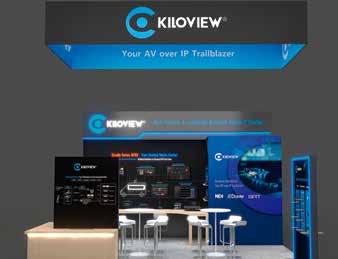
Telos Alliance will introduce and demonstrate new features and capabilities for the Jünger Audio flexAI platform, including AIXpressor and flexAIserver.
› FlexAI’s object-based audio workflows for immersive audio: an upcoming software update scheduled for Q2 2025 will include a 7.1.4-channel program processing strip with an immersive upmixer for generating surround and height channels, a 7.1.4 channel monitor controller, Dolby ED2 encoding and decoding, and an S-ADM metadata output for the Dolby E decoder.
› FlexAI’s low-latency Automixer: will benefit from an optional machine learning AIpowered feature, providing mix parameter adjustments to ensure consistent levels, enhanced speech intelligibility, and hostpriority control with ducking.
› FlexAIcloud: will deliver the same processing options found on the AIXpressor and flexAIserver hardware offerings but with the flexibility and scalability offered by a cloud-based workflow.
Telos Alliance booth location: N721
Lawo will showcase its latest advancements in audio, video, networking, and control solutions focused on production workflows. These are some of the highlighted products:
› Intelligent Multiviewer: The Home platform and Home Multiviewer application optimize multiviewer display performance.
By selecting the proxy resolution based on Picture-in-Picture (PiP) size, it reduces bandwidth consumption and CPU load.
› Home Applications: The integration of 14 new solutions includes HOME Multiviewer, UDX Converter with HDR processing, Graphics Inserter, Test Pattern Generator, Color Corrector, Downstream Keyer, among others. All are designed to support multiple formats such as SMPTE ST2110, JPEG XS, NDI, SRT, Dante, and H.264/H.265.
› The Home Platform: an open, cloud-native management system for IP-based media infrastructures. Engineered for automated device discovery, network security, and centralized control. It provides a foundation for managing modern IP-based media infrastructures.
› Crystal Broadcast Console: built on RAVENNA/AES67 networking standards, it integrates IP-based workflows and offers compliance with SMPTE ST2110-30/-31 for audio and ST2022-7 for redundancy.
Booth Location: N623
Leader
Leader Instruments Corporation announces its new LPX500 multi-channel 4K waveform monitor will make its debut at the event. A four simultaneous input Waveform Monitor with 100G-IP and 12G-SDI toolsets. Its primary features include:
› Four independent analyzers, enabling the display and monitoring of four IP/SDI, HD/ UHD and/or SDR/HDR video source inputs.
› Support for SD/HD/3G/6G/12G-SDI, 10G/25G/100G IP interfaces with SD/HD/
UHD, SMPTE 2022-6, SMPTE ST 211010/20/20/31/40 with ST 2022-7, and AMWA NMOS.
› A second 8-inch monitor provides an additional compact screen that optionally extends the unit’s display capabilities, with independent screen control.
› The LPX500 hides the complexity of SDI/IP systems providing an uncluttered view of information.
› Advanced SDI Physical Layer Analysis (Eye and Jitter) option.
› An RGB vector display providing camera shading tools to monitor gamut violations in production environments.
› Optional software licenses for UHD/4K support, HDR, 25G IP, 100G IP, EUHD (47.95-60p RGB YCbCr 444 formats) and SDI/IP AV Test Signal Generation.
Booth Location: N331
LTN will show live sports, channel distribution, and real-time content versioning technologies designed to drive revenue for sports leagues, content owners, and streaming platforms. The company will also offer tow talk sessions on Sunday 6, at 1:15pm ((Re) Building a Sports Business on Local Broadcast – Programming Everywhere ) and the other one on Tuesday 8, at 3:45pm (Powering the Live Streaming Spike: How Pro Volleyball Federation and LTN Deliver the League’s Record-Breaking Production and Multi-Platform Distribution Play).
› Live sports: flexible signal acquisition using the LTN Network, fiber, satellite, SRT, and other protocols, real-time customization of video and audio and signal monitoring in the built-in Watch Portal, ad insertion workflows, and support from managed workflows to stand-alone tech.
› Channel distribution: designed to deploy 10 channels to 100 locations or scale 1 channel to 1,000 locations, tools for visibility throughout the signal chain, customized content, and streamlined implementation of the LTN ecosystem.
› FAST channels: transparency from content acquisition to destination, tailored workflows, and flexible APIs that integrate into customer ecosystems.
Booth Location: W2601
LiveU will showcase its expanded IP-video EcoSystem and its latest innovations, which include:
› LiveU IQ (LIQ): a cellular bonding that switches between mobile network operators to deliver optimal transmission performance in any location, leveraging eSIMs, AI, and hybrid cloud technologies.
› Enhanced File-based Workflows: new capabilities to transfer large files in real time using bonded IP, enabling faster content management and accelerating mission-critical workflows.
› LiveU Studio: a cloud-native production solution that allows an operator to produce fully-featured live sports programming, employing a clipping tool, broadcast-grade
audio suite, instant replay, new SRT enhancements and more.
› Enhanced Remote Production (REMI): LiveU’s Transmission Mode for its videoover-bonded-IP field units now offering milli-second latencies, giving storytellers the option to select between fixed, mobile or hybrid connectivity.
› LiveU Ingest: an automatic recording and story metadata tagging solution, which allows producers to process video faster while cutting production costs. Part of the newsroom revolution, LiveU Ingest offers enhanced features like LiveU Record and deep integrations into news and story control systems.
Booth Location: SL4911

menu
Marshall Electronics will debut its newest camera controller, RCP Plus, focused on enhancing production capabilities and streamlining workflow for professionals in the broadcast and AV industries.
The Marshall RCP Plus features an Ethernet connection supporting Visca-over-IP, along with the ability to control via traditional RS485. The device also includes Power over
Ethernet (PoE) capability and a breakout adapter that facilitates the connection for RS485. This adapter converts XLR connections to a secure screw terminal (Phoenix-type) connection.
Booth Location: N2649
Matrox Video will offer its latest innovations designed to optimize live production workflows while paving the way for the next generation of IP-based broadcasting.
› Monarch EDGE: high-performance, lowlatency IP-based encoder and decoder pair that supports 4K and multi-HD workflows.
› Matrox ConvertIP: the ultimate ST 2110 and IPMX bridging solution, it enables integration between HDMI and SDI for flexible and future-ready AV deployments. The latest in the series to be demonstrated at the event, Matrox ConvertIP SDM, is an Intel Smart Display Module (SDM) that supports ST 2110 and IPMX inputs, delivering zero-latency 4K video over IP.
› Matrox Vion: an IP video gateway that supports multi-channel encoding, decoding, and transcoding across ST 2110, IPMX, SRT, and NDI formats.
› Matrox Avio 2: first NMOS-aware, open standards-based ST 2110/IPMX IP KVM extender. It delivers image quality and performance with support for up to 4K resolution while providing low latency, secure remote access, and seamless integration across diverse systems.
Booth Location: SL4511
Media Excel will show how it’s trying to set new standards for innovation, from native vertical video encoding for mobile-first platforms to ultra-low latency delivery for live sports and AIpowered bandwidth optimization.
› Launch of vertical video encoding for mobile content: Media Excel will introduce native vertical video encoding within its HERO platform to try to help broadcasters and OTT providers deliver high-quality, mobile-first content optimized for platforms like TikTok, YouTube Shorts, and Instagram Reels.
› Solutions for live sports and events: by using multi-camera synchronization, forensic watermarking integration with an added layer of protection, and scalable transitions between distribution environments, enabling migration from satellite to IP-based workflows.
› Diva: an AI-powered encoding tool that optimizes bandwidth efficiency without compromising visual quality. Using deep learning algorithms, it adjusts encoding settings based on content complexity.
› Hero platform: optimized for scalability, reliability, and video quality, it achieves subthree-second glass-to-glass latency, offering real-time delivery for sports, news, and live events. It works across on-prem, cloud, and hybrid environments and supports HEVC, AV1, and VVC encoding. HERO is designed with centralized management capabilities for real-time monitoring, redundancy planning, and high availability configurations.
Booth Location: 3425
MediaKind will present a series of collaborative partner demonstrations for the video ecosystem:
› Cross-Cloud Flexibility: demonstrating MK.IO’s “sign -in, stream live, any cloud, any scale” approach on AWS, Azure, and GCP, focusing on seamless deployments no matter the location or scale of operations.
› Multi-View Experiences: in collaboration with Skreens and Bitmovin, unveiling dynamic multi-camera and multi-angle capabilities with immersive viewing options.
› Gameday Personalization: partnering with Spicy Mango to create hyper-personalized content flows.
› AI-Assisted Production: collaborating with Grabyo and FX Digital to showcase intelligent, real-time operations for live sports, enhancing production efficiency and providing viewers with control over their experience.
The company will also offer a series of informative speaker and panel sessions on Monday, April 7, and Wednesday, April 9, covering different topics such as engagement, streaming and video platforms for AWS, Azure, and GCP.
Booth Location: W1731
Mediaproxy will introduce its innovations designed to reduce cost and enhance the efficiency and flexibility of broadcast operations.
› Monwall Server: an extension of its existing interactive multi viewing applications to provide traditional output streaming. It
allows for the generation of mosaics and output of various low-latency formats, and loofs to offer customers a cost-effective approach to software-based multiviewing and hybrid workflows.
› New cloud licensing feature: to try to empower customers to deploy Mediaproxy systems as needed. This enables a pay-peruse model, ideal for customers with nonlinear programming or those looking to temporarily extend their usage for special events such as live sports. Its flexibility is focused on ensuring that customers have the option to scale their operations temporarily up or down.
› Support for JPEG-XS: designed to provide high-quality, low-latency video inputs for broadcast monitoring.It allows for the seamless integration of TR-07 streams into LogServer.
› A3SA security protocols: into the core of its LogServer engine, the company will try to provide broadcasters with a cost-effective option to monitor both encrypted to-air and off-air signals.
Booth Location: W1417
MRMC will showcase its product lineup through live demonstrations and interactive sessions to explore real-world applications of its technology. The featured equipment includes the Slidekamera by MRMC Atlas & Bullhead, Nikon SR-1 (Small Robotic Head) on the new Orion Slider, and the Cinebot Mini on Track for cinema applications. Some of the products on display will be:
› StudioBot XL: a multi-axis robotic system with a large operating envelope designed to offer visual creativity to traditional dolly systems. It integrates with studio automation and 3D graphics systems to create programmable and repeatable shots for studio environments.
› AFC robotic head: designed to deliver speed and accuracy, it features a small footprint that tries to get smooth, precise shots without compromising picture quality.
› PTA-2 Arm: a robotic camera platform specifically designed for supporting heavier broadcast cameras and lenses in studio applications. A variation, the PTA-2B, is designed to carry heavy-payload box lenses to be used in sports productions.
› RLS Rail Lift System: expands MRMC’s PTZ solutions by combining vertical lift with a side-to-side motion. It delivers 5-axis of motion, and integrates a range of height configurations to capture sitting and standing shots without reconfiguration.
Booth Location: N2038
Net Insight will show its demos designed to elevate live sports with solutions that drive connectivity, security, synchronization, scale, and monetization. Its objectives are:
› Connection: its solutions try to ensure smooth media flows across networks, regardless of format or location.
› Protection: with a focus on stringent security protocols and media safeguarding, Net Insight is looking to offer fewer interruptions and secure streaming.
› Control: its orchestration solutions provide real-time media synchronization and robust monitoring.
› Monetization: trying to reach new markets, create additional revenue streams, and grow.
Booth Location: W1425
Panasonic
Panasonic will exhibit its latest innovations at NAB. The company's Broadcast and ProAV line includes advanced PTZ cameras, studio cameras, the IP-based live production platform KAIROS, professional switchers, camcorders, and versatile software solutions.
Booth Location: N1311

Pebble will be showcasing its solutions, built for the evolving needs of broadcasters worldwide. Some of its products will be:
› Integrated Channel – Flexible, softwaredefined playout
› Automation 2.0 – Next-generation playout automation: provides seamless control over both modular playout architectures and the all-in-one Integrated Channel engine. Seamlessly supporting SDI, SMPTE ST2110, and NDI content flows, these technologies help broadcasters navigate through industry transitions.
› Remote: web-based monitoring and control environment designed to give secure monitoring and management of channels from inside or outside the normal transmission facilities
Booth Location: W2135
Planetcast Media Services will unveil its latest AI-driven, cloud-first innovations.
› NexC: cloud-first media platform that integrates content supply chain management, hybrid cloud playout, IPbased distribution, post-production & compliance services, and white-label OTT & FAST channel solutions.
› CloudX-Turbo- High-Performance Sports Playout: optimized for real-time content automation and ultra-low latency switching, AI-driven highlights generation, and dynamic ad insertion and sponsorship integration.
› AI-Driven Content Processing: content supply chain automation that features: metadata extraction and content classification, automated segmentation and tagging, and compliance & localization enhancements.
› PlanetPost (collaboration with Postudio): new AI-powered post production facility, featuring high-precision editing, color grading, and Dolby Atmos audio.
› Managed services (beyond SaaS): integrates tech with expert-managed services to try to cut costs and streamline operations.
Booth Location: W3657
Pliant Technologies will showcase its new CrewCom CB2 wireless intercom system as well as its range of intercom solutions. Available in both 900MHz and 2.4GHz frequency options as well as 900MHz Oceania and 2.4GHz CE compliant models, the system includes the CrewCom CB2 BaseStation and up to six CRP - 12 two-channel radio packs to create a powerful but economical wireless intercom system. This latest solution from Pliant provides customers with two intercom channels as well as interconnectivity to all industry standard two - and four-wire intercom systems.
The system is compatible with the company’s line of SmartBoom headsets and delivers 7K audio quality.
Booth Location: N2769
Qvest will be exploring how to transform challenges such as redefining content production, modernizing tech stack and infrastructure, creating engagement and personalization, and increasing monetization and revenue.
The company will also show its latest services:
› Applied AI: tailored solutions and proven change management strategies. A guide to identifying high-impact use cases, accelerating pilot success, and seamlessly scaling AI into production. Its strategy looks forward to ensuring measurable ROI, empowering businesses to drive innovation, efficiency, and long-term growth.
› Broadcast Trans¬formation & Systems Integration: future-proof broadcast operations with holistic solutions that drive change across tech, processes, and people. Seamlessly migrate to cloud workflows, IP infrastructures, and AI-based production.
› Digital Media Supply Chain: an integrated content ecosystem designed to enhance accessibility, efficiency, and monetization. It implements and optimizes MAM/DAM systems.
› OTT: looking to achieve greater efficiency, engagement, and personalization across every device and platform with advanced, AI-driven OTT solutions and services.
› IP & Rights Management: to try to maximize the value of intellectual property. From title and metadata management to deal tracking, royalties, and analytics, it streamlines processes, minimizes risk, and boosts ROI.
Finally, to streamline user processes, the company will offer a range of its newest products, including makalu, clipbox, TVXRAY, and qibb.
Booth Location: W2055
Quicklink will launch two new models of its QuickLink StudioPro video production platform: StudioPro-NDI, featuring 10 and 2.5 GB Ethernet interfaces, and StudioPro-3, which offers an HD version. Both include features such as incorporated Reliable Rugged Chassis (RRC) technology and builtin NewBlue CaptivatE graphic. Additionally, these latest enhancements were designed with the evolution of Mix/Effects (M/Es)
Booth Location: SL10413
Riedel will showcase its latest products in audio, networking, and control and will also present its private 5G network solution, Easy5G, as well as its RefCam. Their new solutions designed to streamline connectivity include:
› StageLink Edge services: to try to redefine IP-based audio and intercom workflows, it is designed for broadcast, live production, and studio environments. Its I/O boxes streamline decentralized signal distribution over generic IP networks. It integrates microphones, intercom, GPIO devices, and other audio-enabled equipment.
› Smart Audio and Mixing Engine (SAME): an audio processing software suite set with unparalleled workflow automation
and flexibility. It is based on the latest commercial off-the-shelf server cluster technology to try to deliver unmatched processing capabilities that scale effortlessly with production needs. It caters to a wide range of applications, such as voice-over, automated mixing, audio monitoring, and in-line process insertion.
› Virtual SmartPanel: a software solution that looks to leverage user’s mobile devices for remote intercom connections, providing operational efficiency and accessibility across various production environments. It introduces a virtual hybrid infrastructure that integrates with the Artist-1024 platform. The VSP adds scalable remote intercoms on iPhone and Android phones and tablets, as well as browsers for platform-independent operation.
Booth Location: N1821
ROE Visual will demonstrate newly launched products and connect with attendees throughout the exhibition. The company will also partner with disguise, ARRI, Vizrt, and B&H Studio to show its latest LED innovations. Additionally, it will offer the interactive Black Marble BM2i for immersive applications and the versatile Topaz series for creative stage designs.
› Coral CR1.2: a COB LED panel platform designed for permanent installations. Includes a brightness of 1000 nits, a refresh rate of 7680Hz, and an 8:9 aspect ratio for native 4K or 8K resolutions.
› Denali MIP 0.78: with ultra-thin frame, a pixel pitch of 0.78mm, and native 16:9 resolution. Using the Micro LED In Package (MIP) technology, it is energy-efficient and boasts contrast and a wide viewing angle.
› Ruby RB1.9: powered by Deepsky, delivers precision for XR and virtual production.
› Carbon Full Spectrum series: offers color accuracy with RGBW (using Brompton Technology) and RGBCA (using Megapixel)
Booth Location: N2839
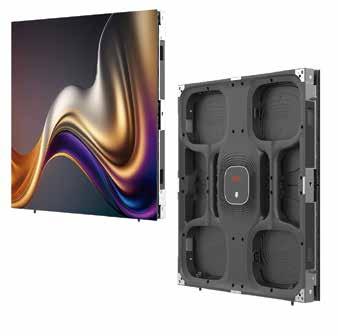
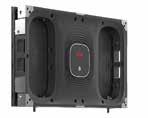
RTS will offer its intercoms, microphones and workflow software and solutions/systems integration. Some of the products attendees will be able to see are ODIN Digital Intercom, a highly scalable intercom system in a 1RU (Rack Unit) package that can grow from 16 ports to a maximum of 128 ports; OMNEO, a media networking architecture allows the transport and easy management of media,
control, and other data over IP networks; or DBP, a four-channel/four-button wired beltpack that runs on PoE+ (Power over Ethernet 802.3af and 802.3at) and connects using OMNEO IP technology.
Booth Location: N2639
Sennheiser will showcase many products of its catalog, including its microphones and audio solutions for the world’s leading news organizations, sports broadcasters, ENG professionals, and TV producers.
Booth Location: N1428
StreamGuys officially enters the AI universe with the debut of new workflow integrations. The first implementation to be showcased eliminates the decision of when, where, and how to tag transition points in podcasts and on-demand audio streams where ads would appear. Additionally, it can provide automatic summaries and transcriptions of podcasts.
Booth Location: W1743
SDVI will try to demonstrate how its Rally media supply chain management platform is giving media operations teams the ability to meet the often daunting demands for highvolume content processing and escalating deliveries. It will also highlight new technical integrations with third-party products adjacent to customers’ core media supply chains, such as:
› Centralized Management of Metadata Forms and Lists: enabling metadata form changes to be performed once and propagated to each Rally Gateway that might use that form. It also enables dynamically linked lists.
› Technology Integrations: new functionality based on integrations with technology from Media-Anywhere for editing, Eikon Group for external job management, and Spectra Logic for on-premises storage management.
› Operator Interfaces: interfaces for its Rally Insight, it has added new visualizations and operator control to the data being presented, particularly for job costs and duration, and for Rally Connect products it provides a new operational user interface that tracks delivery status for both content packages and metadata updates.
Booth Location: W1542
SGT will be present alongside Hexaglobe, strengthening its presence and bringing together the Hexaglobe Group brands (BBright, SGT and Hexaglobe). The company will showcase VEDA 20, its MAM and Automation solution designed to optimize workflows and enhance operational efficiency. Attendees will be able to see live demonstrations of the solution and the SGT range of products.
Booth Location: W3650
TAG will unveil its latest innovations for end-to-end monitoring and visualization, including a special preview of QC Station. Visitors will see how the Realtime Media Platform simplifies workflows while trying to guarantee high quality video.
› QC Station Preview: a solution designed to enhance video quality control across live production and distribution environments. It integrates QC Elements to monitor video quality control in real-time and validate content integration. It offers scope-like functionality for precise monitoring of luminance, chrominance, color volume, and HDR content. These capabilities are available directly within TAG’s Media Control System (MCS).
› Advanced User Management functionality: includes Access Groups and Role-Based Access Control (RBAC) to streamline and secure user access management.
› End-to-End Monitoring: with support for cloud, hybrid, and on-premises workflows, the platform provides monitoring and visualization across media formats and standards, enabling broadcasters to achieve seamless operations and monitor content integrity - whether in live production, playout, OTT, or traditional delivery.
Booth Location: W1757
Telemetrics will be showing new features for its OmniGlide Robotic Roving Platform, RCCP2A control panel, and reFrame AI-assisted talent and object tracking software. The company will also be showing the TeleGlide TG-5 camera track and trolley system, which
can be embedded into the floor of sets with the objective of acquiring a highly creative result. Additionally, on the show floor will be a ceiling-mounted track system, the RoboEye Teleprompter system (which moves with the talent), and the PT-WP-S5 Pan/Tilt Head outdoor camera housing system.
Booth Location: N828
Teradek will be showcasing its innovations in live contribution and phased upgrades to broadcast workflows, such as:
› Remote contribution over 5G, private, and public networks
› Seamless broadcast interoperability for multi-vendor workflows
› Wireless video over 6GHz for true zerodelay transmission
› A sneak peek at our next-gen ultimate broadcasting pack
Booth Location: N2121
Telos Alliance will be offering its advanced Radio and TV solutions from Telos, Omnia, Axia, Linear Acoustic, 25-Seven, Minnetonka Audio, Telos Infinity, and their partners, Jünger Audio — plus some new tech that will be making its debut. Its catalog includes:
› Axia Quasar XR & SR: mixing machines that accommodate up to 64 input channels. It is equipped with DSP audio shaping tools, touch-sensitive faders, encoders and user buttons, a touchscreen control center, HTML5 remote control, four programmable layers, Automix, soft Call Controller for Telos phone systems.
› Linear Acoustic Aero (Aero.20, Aero.200, Aero.2400): series of DTV hardware audio processors feature integrated loudness control, upmixing, watermark encoding, Dolby AC-3 encoding, SAP audio, downmixing, automated EAS and text-tospeech audio insertion, dual independent 3G SDI I/O paths, user-selectable metering and logging options for EBU R 128 or ATSC A/85.
› Omnia Forza FM: omnia-grade five-band FM audio processing to the virtual realm, with wideband and multiband AGCs and limiters optimized for FM, the Frank Foti-designed Silvio clipper from Omnia.11, and integrated stereo generator for the clean, dialdominating sound Omnia customers expect. Deployable on on-premises COTS servers or a cloud-hosted platform such as AWS.
› Telos VX Duo: the latest in the family of broadcast VoIP phone systems, it delivers stellar broadcast VoIP call quality. Features scales from 2 VoIP channels to as many as 8 channels, in 2-channel increments, VXcompatible call screening software, and Axia Pathfinder Core Pro broadcast controller.
Finally, in booth #N2553, Telos Alliance will present a demonstration of Telos Alliance Chairman / Omnia founder Frank Foti's latest innovation: Déjà Vu immersive 5.1 audio upmixing from Syndicate of Sounds.
Booth Location: N721

Tedial will share its most recent developments and insights aimed at M&E organizations to manage the media supply chain.
› AI Tools: SmartWork, the media integration platform, normalizes output to a common data model, making them interchangeable and adaptable.
› Media Supply Chain: the iPaaS powers no-code automation for M&E, supporting cloud-native and hybrid models for scalability. No-code platforms speed up integration without heavy coding, boosting interoperability.
› Metadata and AI Semantic Search: iPaaS consolidates data from varied sources using a shared metadata framework, enabling smarter decisions. SmartWork leverages EBUCorePlus, an open-source ontology, looking for app compatibility and interoperability.
Booth Location: W1525
tvONE will be displaying its new Calico PRO video processing, designed to provide low-latency performance across all LED setups through its 10-bit video processing technology, which provides 4:4:4 color depth.
It will be exhibiting its state-of-the-art broadcast and video scaling solutions alongside FX Design Group, Philips Professional Display Solutions (PPDS), and Digital Video Group (DVG).
Booth Location: SL3905
Vizrt will focus on offering innovative solutions that drive creativity, streamline workflows, and boost efficiency. They will offer:
› Scalable solutions for any storyteller to try to acquire a fast-changing media landscape.
› End-to-end workflows in action, designed to streamline workflows, cut bottlenecks, and speed up content creation
› Resource-saving innovations
› AI, AR, and cutting-edge production tools
Booth Location: W3031
Vubiquity aims to demonstrate how Catalog Intelligence, its new module that will be part of the Media Suite AI, streamlines operations, enhances content readiness, and positions media businesses for growth through smarter AI-driven insights. Some of its features are:
› AI-Powered Search: uses natural language to query content libraries.
› Automated Asset Readiness: identifies and addresses missing components like subtitles, artwork, or compliance edits.
› Data Integration & Normalization: consolidates metadata, video insights, and more into a single, unified view.
› One-Click Workflow Automation: triggers translations, quality control, or distribution steps.
› Actionable Insights: prioritizes asset prep, uncovers new revenue opportunities, and optimizes content strategies.
Catalog Intelligence will be available as a module to Vubiquity Media Suite AI customers later in 2025.
Booth Location: W3750
WorldCast Systems will release Audemat MC6 v1.2, the latest upgrade to its FM and DAB test and measurement platform. It integrates lab generators, signal analysis, and audio testing capabilities to try to provide broadcasters and regulators with a comprehensive and precise measurement solution. This version introduces audio and MPX generators for in-depth transmission quality analysis, an Audio Analyzer supporting Analog and AES Audio IN, and a DAB analyzer with full DAB services decoding, including DLS and SLS. Additionally, the FM Analyzer enables measurements from Analog or AES MPX/ Composite inputs. Finally, its multi-receiver capabilities - supporting up to 2 DAB and 8 FM receivers - are designed to enhance measurement efficiency, while the intuitive user interface help optimize workflows.
Booth Location: W3115
Zero Density will showcase the preview of the template-based broadcast graphics, its new workflow designed to enable broadcasters to create and control virtual studios, AR and XR through templates, in addition to on-air graphics using a single, seamless solution, as the company has claimed in a statement. By using Unreal Engine, the team is focused on delivering
future-proof Unreal Engine-based technology to broadcasters with templatebased workflow for on-air graphics, video walls, stingers, virtual studio, and AR – all using Unreal Engine 5.
Finally, the company will host executives of the industry for Exclusive Talk Sessions throughout the show. In addition, Happy Hours on April 6 and 7, at 5 pm will give attendees a space to try to relax. For those who won’t be attending, Zero Density is organizing a fully virtual PostNAB Live webinar on May 22, Thursday to showcase the highlights of the booth. The virtual webinar has two timing options, 10 AM CET and 9 AM PT for different time zones.
Zixi will showcase innovations for live video delivery with unmatched quality, reliability, and security at a lowest Total Cost of Ownership. Attendees will explore solutions for their specific broadcast and live video workflow needs and will be able to see use case demonstrations that will cover
customer use cases and outcomes across four live video solution areas:
› Content Contribution: Increase revenue by enabling more events and delivering live content in 4K and HDR reliably at scale.
› Satellite Replacement: Enable higher quality video over IP with increased flexibility and agility.
› B2B Distribution: Monetize content while predictably supporting audience expectations through cloud based ingest, localization, and distribution for local and affiliate networks.
› D2C Distribution Enablement: Normalize and distribute transport streams for OTT and FAST from varied sources consistently at scale.
On Monday, April 7 at 1:30pm, the company will also offer a morning session to explore how the implementation of Zixi’s technology addressed Sinclair’s challenges. Additionally, from 5 pm to 6:30pm, the Streaming Summit Happy Hour will be open for every attendee.

Adde Granberg, CTO at SVT: “As long as broadcast remains separate from IT, it will eventually become obsolete and die—like a dinosaur in the modern world”
If the broadcast industry doesn’t seek synergies with the IT world, it will become obsolete and die, “like a dinosaur in the modern world.” This is how Adde Granberg, CTO of Swedish public television SVT (Sveriges Television), expresses himself. This broadcaster has taken the technological lead with the implementation of NEO, a new software-based audiovisual infrastructure for communication, distribution, and production.
Coinciding with its launch, TM BROADCAST
has reached out to Granberg to gather his first-hand assessment and understand the philosophy behind such a significant upgrade. “This transition is like moving from a gas engine to an electric one,” he illustrates. “It is the most significant change I have witnessed in my 32 years in the industry. We still have our broadcast vehicles running, but now, the engine—the core of our production infrastructure— is completely new and built on proven communications technologies.”

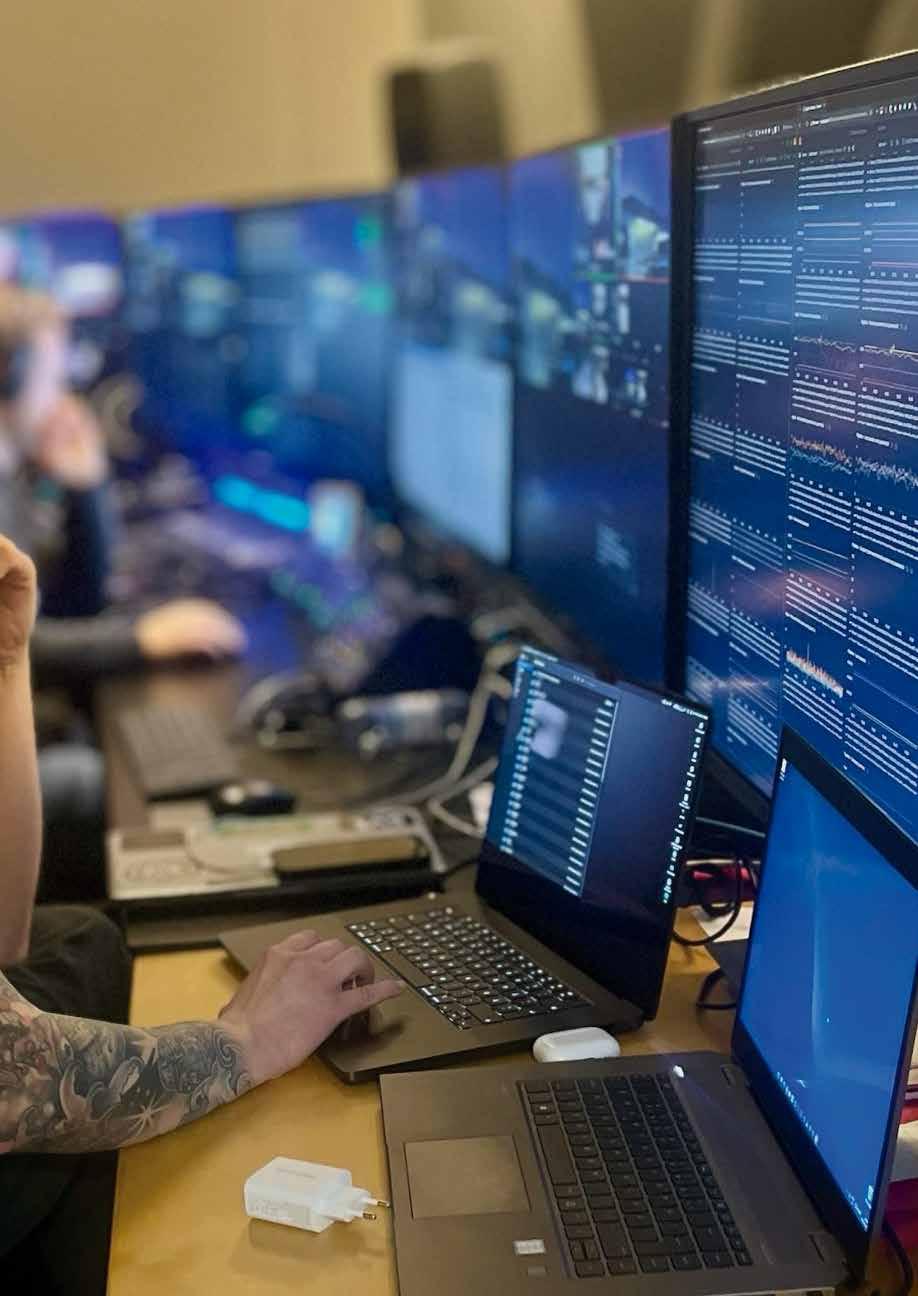
“I believe this is the biggest step SVT has taken towards software-based production in an industry traditionally reliant on hardware infrastructure”
The television has been working on this project for the last five years and launched it this spring. “I believe this is the biggest step SVT has taken towards software-based production in an industry traditionally reliant on hardware infrastructure,” says the technical director of Swedish public television.
In this context, Granberg highlights the primary challenge of the project: “Convincing them [the industry and inside the company] that this is the way forward and that we can rely on software rather than traditional hardware systems has been a key hurdle.” Beyond the technological leap, SVT is driving a change in the way of working, considering that both go hand in hand. “We need to reconsider the traditional mindset around production workflows.”
SVT’s last major technological investment was in 2012, when they created an infrastructure in Stockholm to enable remote productions during that year’s Olympic Games in London. The company’s new milestone is inspired by a similar motive, aiming to optimize its coverage of the upcoming 2026 Winter Olympics in Milan.
In this regard, SVT’s CTO justifies that, unlike other types of content that follow a fixed format, such as a weekly entertainment show, the sports sector is always pushing to do more, making these types of productions particularly innovative. “The nature of sports broadcasters is to push boundaries and explore new technologies, which makes sports coverage extremely important for SVT,” he states.
It is in the sports field where the new NEO system has already

ADDE GRANBERG
made its first significant steps. For the first time, SVT’s sports division independently managed the broadcast of the table tennis event, Singapore Smash, which concluded on February 9. Asked about his assessment of this production, Granberg reflects: “If you’re directing a table tennis event, you can now configure your working environment in a way that suits you best, rather than being constrained by industry-defined standards. The vision mixer, for example, becomes a customizable tool rather than a fixed piece of hardware. This shift forces us to redefine the cornerstones of next-generation production.”
Granberg also emphasizes the democratization of technology, which should also lead to a democratization of television production. “With AI and advancements in software development, it’s becoming even easier for everyone to create content,” says the technical head. “Of course, we still need a backbone—we need a network and a hosting platform. But this is the same requirement for the banking industry or the automotive industry. The platform and infrastructure are similar, but the software for television production is a whole different matter.”
In this sense, Granberg points out that, unlike
what happens when you leave the broadcast sector, in a broadcasting environment, specialists are still needed to operate the systems, whether it be communication, video mixers, routing, or graphics. “Outside of broadcast, anyone can configure a multi-camera setup, communicate, and switch between feeds using software without requiring deep technical expertise,” he contrasts. For this reason, he argues that the future of television is largely about “eliminating the need for specialists when they are not truly necessary.”
Below, we offer a transcript of the interview, where all these key points are discussed in detail:
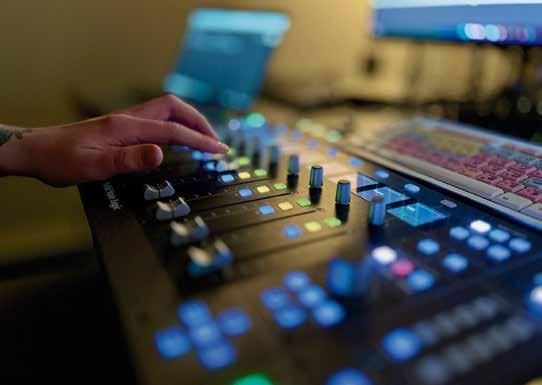
First, I’d like to confirm that your new production system is already fully operational. In this sense, what’s your assessment of this project?
Neo, as we call it, is a family of software tools built on COTS (commercial off-the-shelf) solutions. It’s an internal project at SVT that includes software for communication, distribution, and production. It is now in operation and beginning to take off. We’ve been working on it for the past five years, but it officially went into production this spring.
“We must also recognize that broadcast standards have primarily been maintained to preserve legacy systems, not to open the industry to the future”
While developed in close collaboration with external partners, Ateliere, Vindral, Eyevinn Technology, the work is driven with great energy and focus by our own production development department at SVT — ensuring that the system truly meets the needs of our organization and future workflows.
We’ve already put Neo to the test with live coverage of table tennis together with our sports department, as well as the Swedish Rally. And more exciting productions are just around the corner, including coverage of the Olympics. This system is designed to handle almost everything,
perhaps with the exception of our main streams or audience-facing productions.
I believe this is the biggest step SVT has taken towards software-based production in an industry traditionally reliant on hardware infrastructure.
What have been the main challenges of this project?
The biggest challenge has been gaining acceptance both within the industry and inside our company. Convincing them that this is the way forward and that we can rely on software rather than traditional hardware systems has been a key hurdle.
To what extent would you consider this upgrade to be innovative compared to the current technological landscape of television in Sweden or Europe?
For me, at SVT, this transition is like moving from a gas engine to an electric one. It is the most significant change I have witnessed in my 32 years in the industry. We still have our broadcast vehicles running, but now, the engine—the core of our production infrastructure—is completely new and built on proven communications technologies.
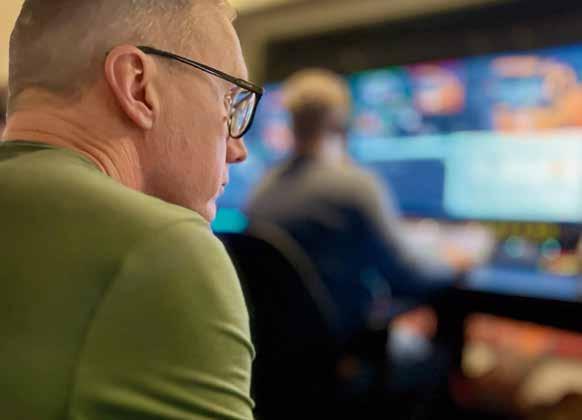
“Sports production is a perfect testing ground for innovation, as it allows us to experiment with new technologies that ultimately benefit our audience”
You have said that you’ve already tested this new system in the table tennis event in Singapore. How was your experience?
That’s correct. The system is already on air and fully operational, and with it come new challenges and new possibilities. We need to rethink how we set up production, how we operate, and how we design production control rooms. We also need to reconsider the traditional mindset around production workflows.
For instance, if you’re directing a table tennis event, you can now configure your working environment in a way that suits you best, rather than being constrained by industry-defined standards. The vision mixer, for example, becomes a customizable tool rather than a fixed piece of hardware. This shift forces us to redefine the cornerstones of next-generation production.
“We need to reconsider the traditional mindset around production workflows”
In general terms, how important are sports event productions for SVT, and what do you think will be the evolution of this type of broadcast?
From a technical perspective, sports coverage is constantly expanding. If we can make production faster, cheaper, and easier, there will always be a demand for more content.
In contrast, entertainment shows often follow a fixed format—for example, a weekly program airing every Saturday. These types of productions remain stable. But in sports, there is always a drive to do more. The nature of sports broadcasters is to push boundaries and explore new technologies, which makes sports coverage extremely important for SVT.
Whether sports remain crucial for the audience is a separate discussion, but from my perspective, sports production is a perfect testing ground for innovation, as it allows us to experiment with new technologies that ultimately benefit our audience.
I’d also like to hear your vision on the convergence of the broadcast and IT industries. What is your opinion on this?
As long as these industries remain separate, I believe broadcast will eventually become obsolete and die—like a dinosaur in the modern world. If you still think broadcast standards will survive unchanged, I encourage you to rethink that assumption.
Look around: today, anyone can set up three cameras, use iPhones with the right software, and produce content. Technology has been democratized in an unprecedented way. However, in a traditional broadcast environment, you still need specialists to operate systems—whether it’s communication, vision mixing, routing, graphics, or replay machines.
Outside of broadcast, anyone can configure a multi-camera setup, communicate, and switch between feeds using software without requiring deep technical expertise.
If we shift our focus from a broadcast-driven approach to an IT-driven one, we need different skill sets, mindsets, and workflows. I believe that if we bring in individuals from the gaming industry—who have spent their lives immersed in interactive environments— they will adapt quickly. They will cut between cameras using software, but they won’t build a vision mixer the way we traditionally understand it.
I guess that’s why you recently mentioned on LinkedIn that we’re at the beginning of the democratization of television…
Yes, exactly. And now, with AI and advancements in software development, it’s becoming even easier for everyone to create content. Of course, we still need a backbone—we need a network and a hosting platform. But this is the same requirement for the banking industry or the automotive industry. The platform and infrastructure are similar, but the software for television production is a whole different matter.
In this regard, how do you imagine the future of television over the next five years?
In the coming five years, I hope that SVT’s technical department will empower anyone who wants to create content by providing them with user-friendly tools. We should eliminate the need for specialists when they are not truly necessary.
“I believe that if we bring in individuals from the gaming industry—who have spent their lives immersed in interactive environments— they will adapt quickly”
We must also recognize that broadcast standards have primarily been maintained to preserve legacy systems, not to open the industry to the future.
To ensure the survival of the industry, we must adapt to the new landscape rather than clinging to the old one. If we fail to do this, the industry will inevitably split into two separate paths.
Note: In a recent interview with TM BROADCAST, Adde Granberg explained in detail the current technological landscape of SVT. You can access this content by clicking here.
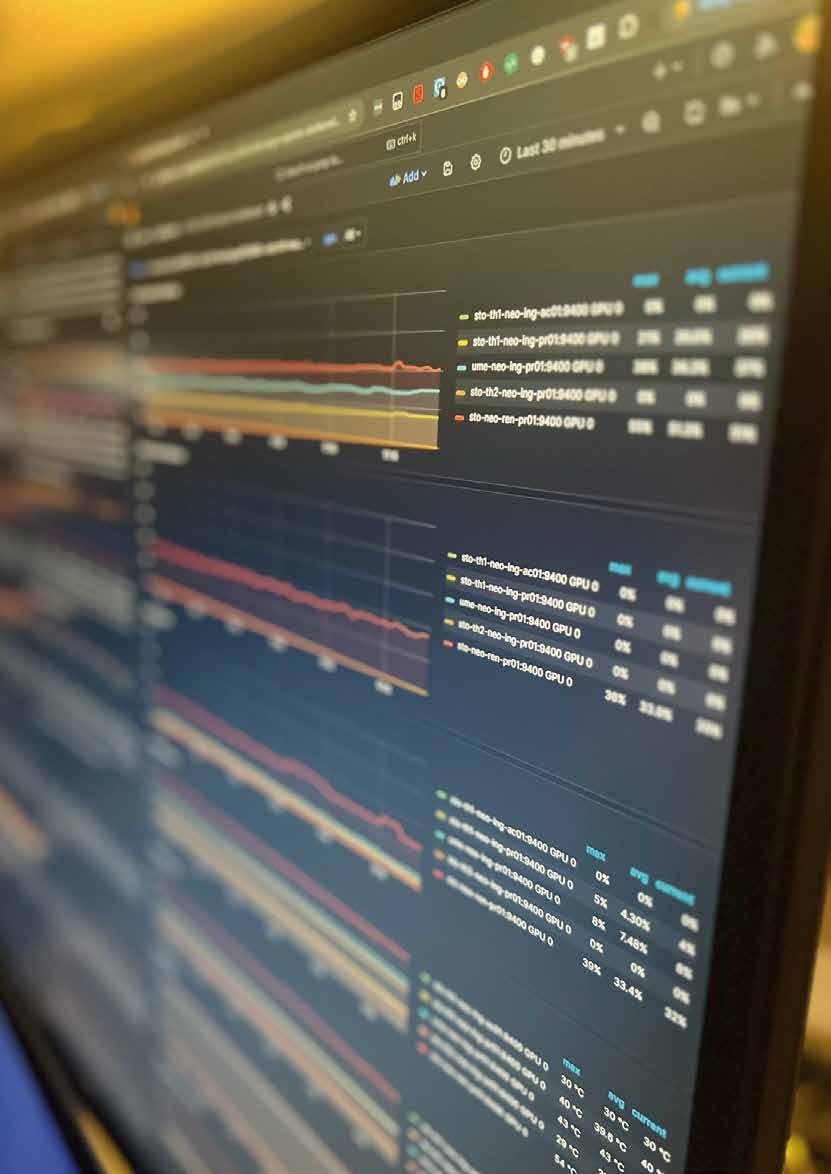


Mediapro has reached the figure of 3,000 matches produced remotely. With this milestone, we are taking the opportunity to explore the keys to this type of broadcasting with Emili Planas, CTO of Mediapro.
“For remote production to be a good option, the stars have to align. It’s not something that always pays off”, he warned.
Remote productions have marked a turning point in sports broadcasting. And a pioneering top-level competition in its implementation was Grup Mediapro for LaLiga -one of the world leading leagues-, which implemented for the first time ever this type of production 14 years ago, when there was still no integrated solution available on the market, carrying it out with in-house developed technology.
This Spanish football competition has recently reached the figure of 3,000 matches produced remotely. We
take advantage of the pretext provided by this figure to explore all the particularities of these productions with Emili Planas, CTO of Mediapro, a voice of undisputed authority to address this issue.
The first thing to clarify is that there is no single remote production model and, depending on the type of sport or competition, the latter will require certain specifications. Emili Planas has told us how Mediapro implemented this technological innovation for LaLiga more than a decade ago: “What we did was set up our own structure with requirements
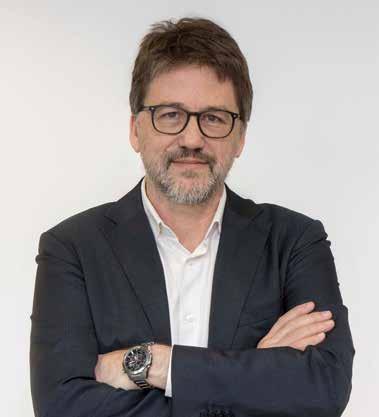
that remain in place to this day. We did not start it as first system from which to settle and then gradually evolve, and instead we for it all and we achieved the most already at that time, succeeding in getting the entire team in charge of production, camera control, etc., experience the same operating feeling by doing it remotely as being inside an OB.”
The challenge was, therefore, to ensure that latency was minimal while maintaining or even increasing the quality and security levels of the production. “In order to achieve that minimal
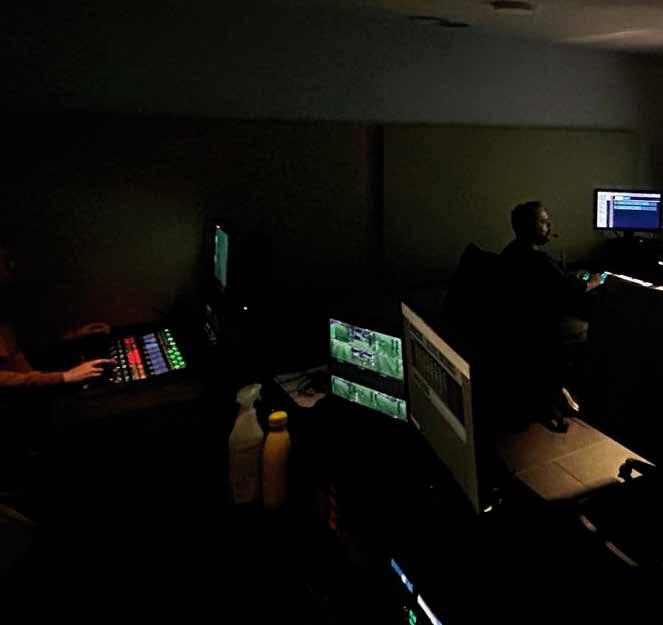
latency that would preserve the good feeling I have mentioned, we had to develop a series of rather curious solutions”, went on Planas. “Nowadays this is easier, but 14 years ago it was something very innovative. In fact, there was only one specific encoder model on the market that could achieve such minimal latency with the bandwidth available at the time and the required quality.”
“We devoted three months to the technical development process and the different tests concerning all the engineering, where the five
areas that at that time made up the group were involved: engineering, Unitecnic; sets and OBs, which at that time worked as separate entities and were not integrated within the Eumovil company as now; Overon for the communications side, networks and encoding part; and Mediapro, in charge of the executive operation and coordination.”
After that time, and with the coordinated work of the five aforementioned units, Mediapro developed a model that is still in place today. “We were the first company to use remote production to
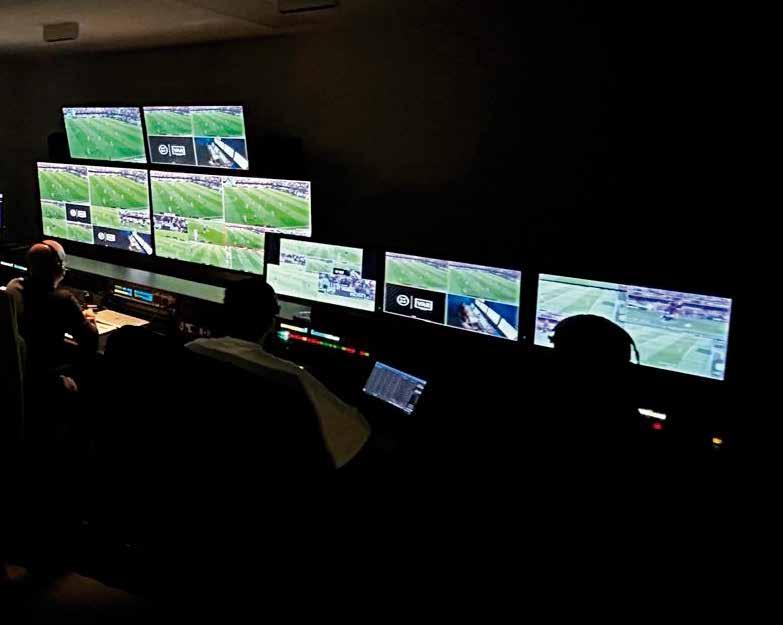
cover a high-level regular competition,” stressed Emili Planas.
Over time, the use of this model was transferred to Division Two. “Interestingly, we started producing first-rate matches remotely, but with the evolution of broadcasts, the increase in cameras and the production requirements of LaLiga, both for the Top Division and for Division Two, the model we initially became suited to perfectly match the accentuated models found in Division Two,” explained the Mediapro CTO.
“In addition, it coincided in time with an increase in the available bandwidth in Division Two stadiums, which made it possible to implement this model, something that had not been possible before,” he remarks. Out of the 11 weekly matches, at least seven are currently done with remote production.
“We were the first company to use remote production to cover a high-level event.”
“What we have done, only more recently, is to enable a second remote production model,” pointed out Emili Planas. “The first is a model that is traditionally called REMI. It is a model in which, to put it simply, you transport all the signals to the production center, so you do the program there, that is, in the OB you only send, so to speak, cameras and microphones. “
“With this second model we implemented,” he went on, “what we do is operate the OB’s devices remotely, and we do apply this in all Division One matches and in Division Two matches where we do not do REMI.
With this model, there are a certain number of operators who do not travel, as they operate the systems that are in the OB truck from the production centers.”
Regarding the scope of these productions, Planas indicated that it allows the deployment of up to 12 cameras, two of them super slow motion, although it all depends on the specific conditions of each match. “The range is between eight and 12.
And two of these cameras are are super slow-motion with three phases, so you have to send four signals from the stadium to the production center to have the composition plus the three phases.”
“Are we talking about hybrid SDI-IP productions?” “We are transitioning,” says Planas. “Although we’ve been using IP networks for contribution for over 20 years, until recently, all local workflows were SDI. Right now, we are combining IP-2110 workflows with SDI workflows, and in many cases, we use hybrid models where IP and SDI are combined as effectively as possible.”
On the other hand, when asked about the use of cloud or on-premises systems for this type of production, Emili Planas indicated that it is more accurate to talk about software-based solutions. “Whether the software has its deployment in the cloud or on-premises is something else. In general,
what we do is classify the solutions based on their use, whether they are software-based or a bit more traditional. At present, we are using software-based solutions that we open in the cloud or on-premises based on variables that do not have an operational sense, but are rather related to the availability of systems, the flexibility of one with respect to the other, economies of scale, or the number of times the system is used.”
“In this regard,” he pointed out, “if we massively use a system on a permanent basis, it is not usually possible to mount it on the cloud, although sometimes it may be the case that it is. It usually pays off just to buy it. If you have, of course, the rack rooms, the maintenance equipment and all the staff and the operating capacity that we have”.
“Sometimes we resort to the cloud,” he added, “because it’s the best option. If you want to create subtitles using AI with a speech-to-text system of
certain quality, cloud-based systems are working really well, compared to others, isolated in your rack room that don’t learn or grow.”
“This is a bit the spirit of it all,” he concluded. We are making parallel products for LaLiga through software-based systems, as the multiscreen for example, but not under this remote production model, because, although it would be possible to do it, it would not be likely to meet the quality requirements we mentioned.”
“The technical and operational quality achieved remotely is exactly the same that we would achieve by doing it locally.”
What determines whether a production of these characteristics is carried out remotely or locally? “Logistics, the distance that the OB truck must travel is what weighs on the decision,” said Planas. There is a clear advantage: if the OB
“No one would be able to tell whether one of our productions is made remotely or locally. This was our main challenge and goal when we designed the system”
truck can do without the mileage, you become more environmentally friendly and save costs. And we strive for both [Since 2014, Mediapro estimates that they have saved 14 million kilometers, which is equivalent to 7,000 tons of CO2].
So, if a Division One OB truck has to cover the same area as for a Division Two match, it is much more efficient to send that truck and do a few miles, instead of sending one that is further away, even if it is a lighter truck or a smaller van. Through logistics, we optimize Division One and Division Two resources to improve efficiency. “
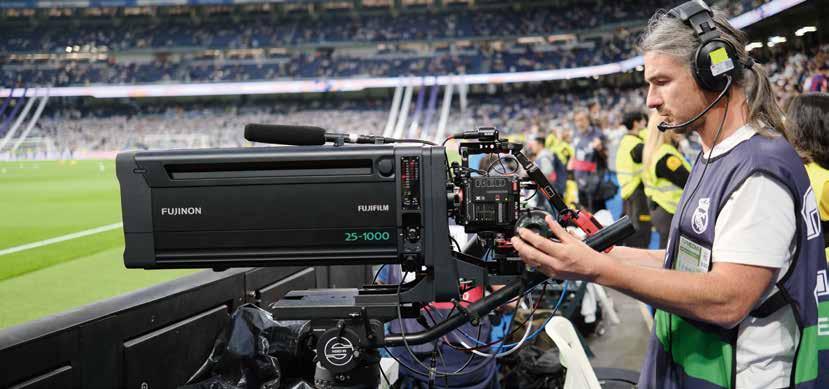
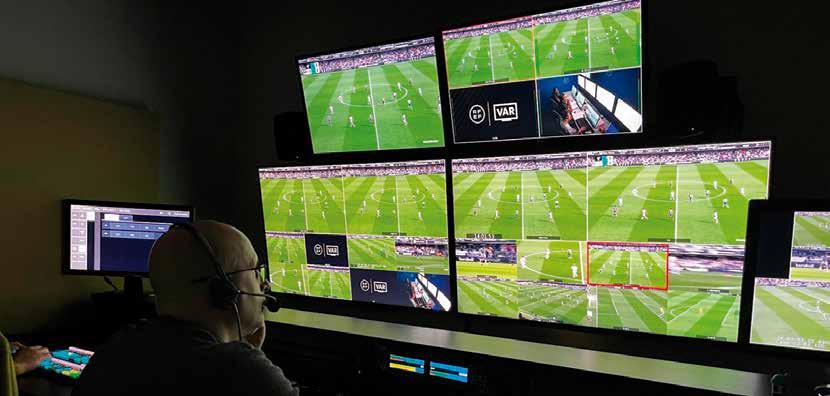
It is necessary to distinguish between the most affordable remote production models -which democratize competitions broadcasting- and the highest-level models
In any case -Planas made it clear- the reason for deploying or not a remote production with these top-level models is not one of a technical or operational nature. “This type of remote production can cover competitions of what we call Tier 1. When top-level competitions are not covered with these remote production models,
it due to other reasons. The technical and operational quality achieved remotely is exactly the same that we would achieve by doing it locally.”
“In fact,” he remarked, “no one would be able, not even a spectator specialized in football productions, to differentiate whether a production we are making is remote or local. This was our main challenge and goal when we designed the system. “We aimed to ensure that there was no perceived decrease in quality or increase in latency compared to other matches and, then, when synchronizing with radio stations, one wonders why one match has more delay than the others. These considerations were relevant when defining
the model and continue to be important to us when defining any new remote production model.”
Emili Planas insisted on this point: remote production cannot be tackled in generic terms and each sport, of course, presents its particular challenges. “There are other competitions or types of production in which latency may be less relevant or where, beyond objective quality, a quality evaluation plays a bigger role. Here we can deal with models in which costs surely can go down, but at the same time they will have their own limitations. If you have to do a replay in super slow motion, for example, lower-cost solutions will give you a lot more problems...”.
“These are the elements,” he continued, “that influence the decision of how this remote production model is made as compared to other models that we also use and that do not quite reach this level of maximum quality.”
In the case of LaLiga, Planas concluded: “Working remotely, with the principles that we apply to carry out a high-level broadcast of LaLiga, does not make any difference at operational level as compared to working in the OB.”
A different matter is dealing with other sports, where perhaps other specific models can be applied for remote production that in the case of football would not be possible: “There are certain remote production models that do pose limitations, which some sports can accept without any issues. Motorsports, for example, where the time between an action and its replay can be somewhat longer.”
“In basketball and football -Planas argues- the replay has to be prepared immediately after the
action happens, because it is usually at that moment when the game stops. That’s when you have time to show it and that’s when the viewer expects it to be shown. In other sports you can wait longer to have the replay ready and it is not relevant in most cases if you take a little longer or a little less time.”
So, going back to the motor example, it is not that difficult to select the camera for the replay of an overtaking or an accident, for example. “You can choose between two or three cameras, but usually the good shot is very clear. In the case of football, there are many cameras where the action appears, and choosing the best one is not so easy,” illustrated Planas.
In football, the choice of the correct shoot requires the operator to have a certain degree of experience to act quickly, and a well-coordinated team is also needed to achieve the same operability as in an OB. This differential element
of football, in short, means that not any remote production model is worth it, but very specific models are needed instead.
“For remote production to be the best option, a lot of stars have to align”
However, this does not mean that, with the right model, production can always be done remotely: “For remote production to be possible from a financial standpoint, a lot of stars must be aligned. It is not something that has come to save our lives and that from now on everything will be done remotely. It doesn’t always pay off.”
It is necessary here to make a distinction between the most affordable remote production models, which democratize production while making it possible to broadcast competitions that otherwise had not been possible to broadcast until now, and top-level models. “When you have connectivity and pluggable devices, remote production is much easier than sending an OB.
Working in SRT and high compression modes, you can do remote production based on cloud or software systems. But -no offense intended- we are talking here about a Tier 3 production model, designed for sports that until now could not afford high-level production because it is more expensive. “
Does it mean that this model is suitable for all types of production? No, it doesn’t. “If production quality must meet strict standards, not only at a technical level, but also at an operational level, due to the speed of response it demands in the event of uncertainties that occur during the competition, latency and so on, then you have to go for a production model, whether remote or traditional, that is a bit higher.”
But this is not the only ‘star to align’ -referring to the metaphor used by Planas-: “Remote production allows you to mutualize the operation and for the same control, for example, to play a game at noon and another at 6 pm.
You have that control doing two matches in one day instead of having an OB truck that will only to one match. What if in the competition calendar all matches are played at the same time? Well, then one of the stars becomes misaligned.”
Another important factor is the distance traveled by the OBs, and Planas provided here the example of the rugby competition in Argentina: “In Argentina, we were considering covering the rugby league with remote production. When we analyzed all the options -which took us a long time-, we realized that all the clubs in the league that we were going to cover except one had their venues around Buenos Aires. That is, operators would take the same time to go to the production center as to the stadium. Suddenly, the distance star was misaligned.”
In short, and serve this as a final reflection: “When we want to set up a remote production model, we always analyze absolutely everything and evaluate
that the stars are as aligned as possible in order to offer the technical solution that best suits the needs, cost and operation that has to be done. Just one model is not good for everything.”
Although we have focused on the technical area in this article, it is worth mentioning, as an appendix, the advantages that this type of production entails on a human level, as it frees a good part of the team from making large trips in OBs and allows them to better balance work and personal life and helps reduce accidents.
Despite the reluctance that could initially arise among producers, Emili Planas indicated that now they are all delighted, and illustrates with this anecdote the comforts that this new form of production poses: “The other day someone said to me: ‘What I like most about remote production is that I have the bathroom behind me, I don’t have to look for it in the stadium and carry the relevant badge or ask a favor from the owner of the bar next door.’
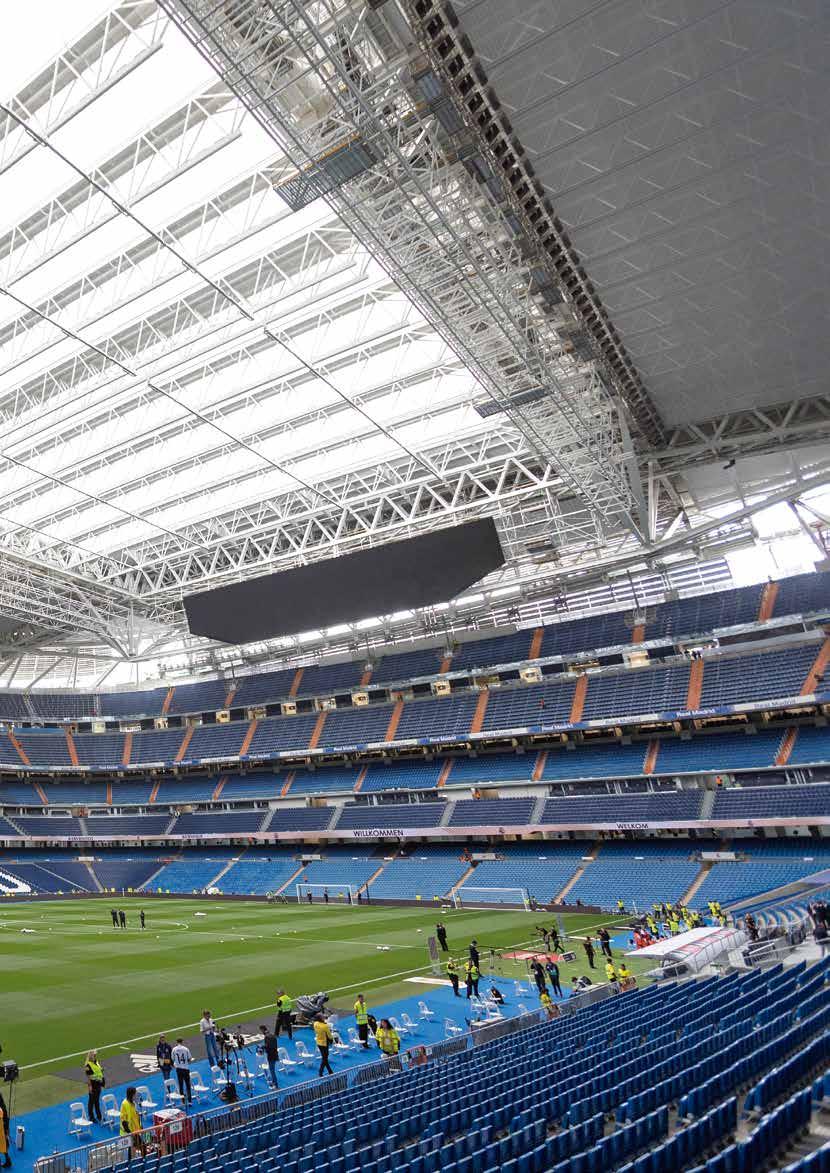
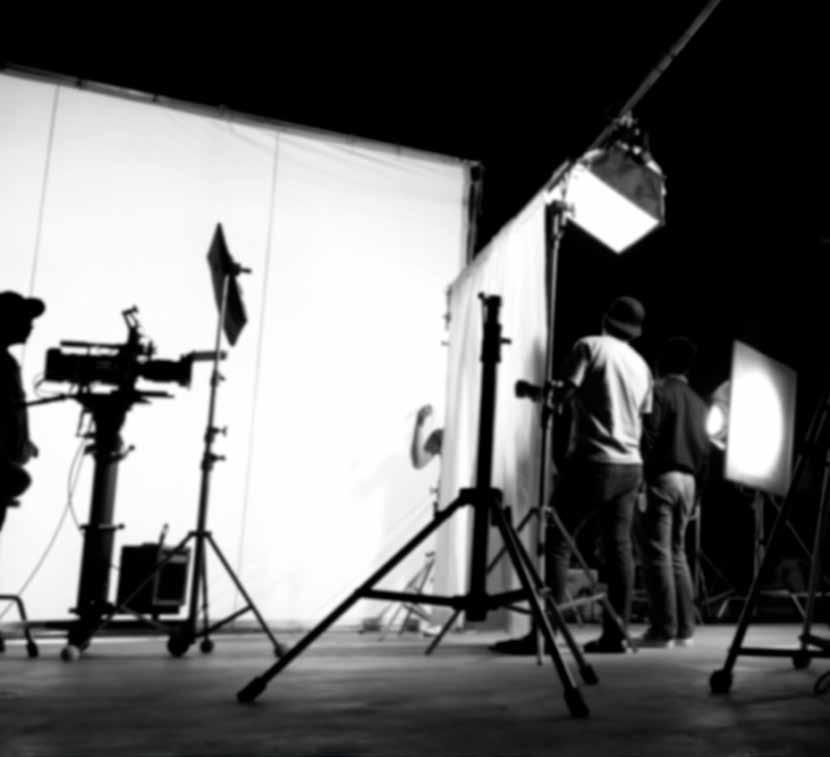
A must-have for all of us
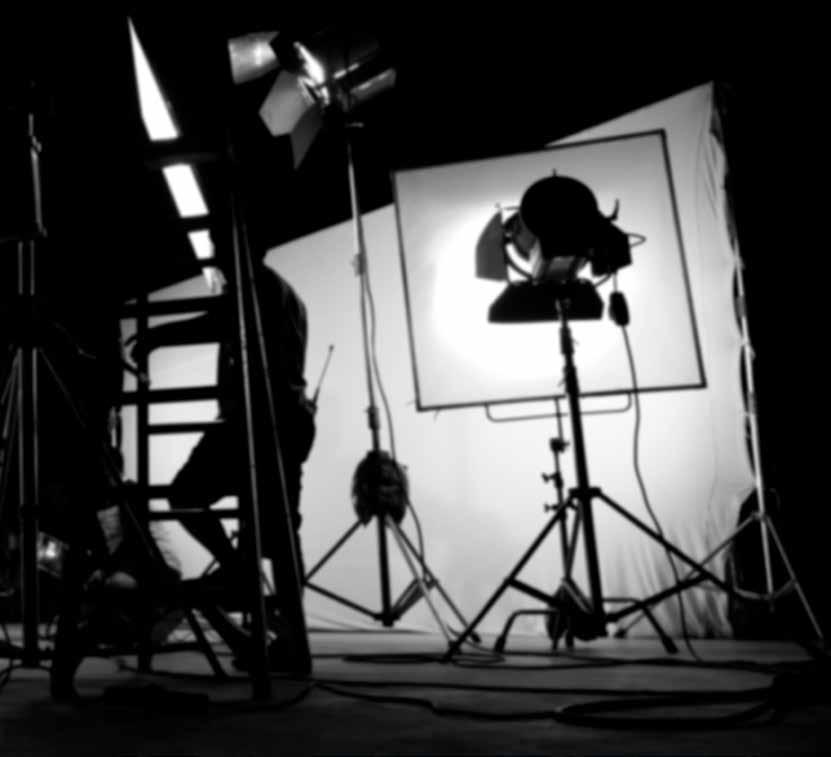
Any of us may have had the experience, at some point in life, of not having enough light when aiming at taking a photograph with a mobile phone. The solution has always been easy and quick to spot, since our current phones -smartphones- come with the standard option of having an LED light built into the back of the device. This LED light can be enabled/disabled manually from a configura tion menu on the mobile screen itself, or the auto option can be con figured to activate when there is little light at the time of taking the picture.
By Carlos Medina, Audiovisual Technology Advisor
But what if with that same smartphone we are recording a video in dim light conditions? Well, we would be facing a problem that needs to be solved. We have to resort to some external light source in order to get the best possible lighting or apply some lighting technique that improves the recording.
This circumstance also happens in the field of photography when we use any camera to record video, whatever the relevant type: compact; Reflex or Digital Single Lens Reflex (DSRL); mirrorless cameras, EVIL - Electronic Viewfinder with Interchangeable Lens-, CSC (Compact System Camera), MSC (Mirrorless System Camera) or DSLM (Digital Single Lens Mirrorless); hybrid cameras or bridge cameras or superzoom cameras; special or action cameras; etc.
It will also happen to us when we immerse ourselves in the field of broadcast video recording – professional video/TV environment – to make a
video recording, whatever the type of camera (handycam, compact, modular, ENG - Electronic News Gathering -, EFP - Electronic Field Production -, or any DNG -Digital News Gatheringcamera). We always need some external solution for correct front lighting or to apply more sophisticated lighting techniques when dealing with the scene to be recorded (fill light, backlight, ambient light...).
Surely you are familiar with the trend of using led rings, very popular among influencers or youtubers. Well, this is what this article is about, but we will only focus on what falls within the broadcast video/TV environment.
Let's learn a little more about the lighting solutions used by video/TV operators when they go out to record a type of audiovisual production/content that we know as a "piece". Each of the solutions that we are going to present can be generically referred to as accessories or ancillary lighting equipment.
In no circumstance will we refer to the various devices/light projectors/ lamps that are used in the field of photographic, cinematographic lighting or in large TV studios or in live shows or events, since they have very different uses and needs (such as remote control under a lighting console or achieving a greater range in lighting distances, for example).
It's time to get started. The first thing is to identify and be acquainted with a classification of these possible lighting accessories, which offers us both current technology and the various manufacturers, being the most optimal for the described field of recordings with a single video camera:
> LED torch: This accessory is the most common and used in ENG / DNG recordings. It is characterized by being the grouping of a very limited number of LEDs arranged inside the device's housing or body. These are compact solutions that are placed on top of the
video camera (camera shoe). Its design comes from the old torches of incandescent lamps, hence the same name. The result of light that is generated is a type of hard and more concentrated light or spotlight thanks to the design of the device itself.
Some models are NANLITE Nanguang Fresnel CN-8F; NANLITE NA312001 Litholite 8F; SWIT Sunpro 201 SWIT S-204; ZHIYUN Molus X100;…
> LED panel torch: This accessory is a modification of the
above, its design being rectangular or square. The big difference is a greater number of LEDs and their distribution on the flat surface - what is known as a panel. This design and the placement of the LEDs cause a more open light emission or wash. This device is also placed on top of the video camera (camera shoe).
Some models are FALCON EYES PockeLite F7; ZHIYUN Fiveray M20C or M40; GODOX ES45 E-Sport; GODOX LF308D; NANLITE NA152018 Litolite 5C;…
When the LED panel has a completely round or circular design it is known as LED DISC (ROTOLIGHT LED).
Some models are CROMALITE Rotolight LED Torch, VIBESTA Peragos Disk 30c Color RGBWW Soft;...
> LED Minipanel: This piece of equipment is a smaller version of what is known as an LED Panel, used more in film shoots or placed on TV lighting grills. Therefore, it is a smaller accessory, which is more convenient for transport, handling and placement.
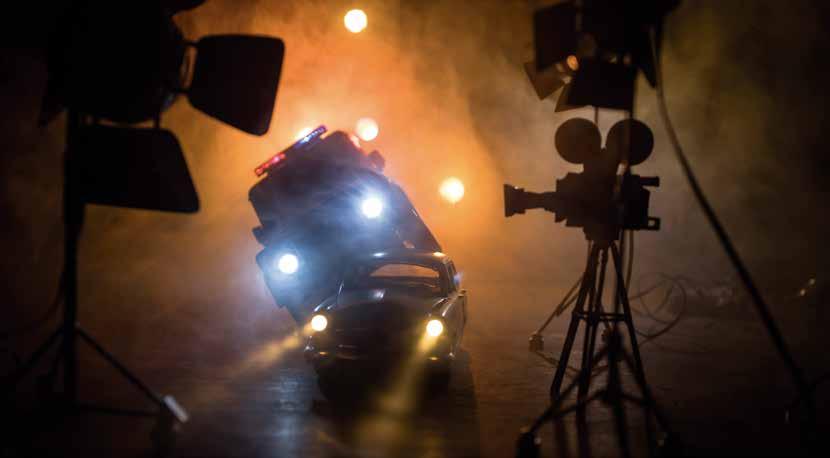
In the case of recordings with a stand-alone video camera, it is generally used to make more complex lighting schemes or as filler or indirect light sources, always striving for solutions in regard to the specific needs of the particular "piece". These devices are usually mounted on mini-tripods for lighting, universal clips or table supports.
Some models are GODOX ES30; GODOX Panel led 1000D II;...
> LED Ring: This accessory has been very fashionable in recent years thanks to the trends set by influencers and youtubers. It is just about placing the video camera or only the camera lens inside this LED ring with the sole purpose of obtaining direct, soft, flat lighting and without any nuance of drama towards the object/subject being illuminated.
Some models are REALPLUS Selfie Ring
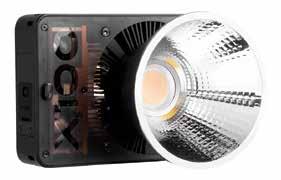

Light; F&V R300S SE Bi-color; F&V R720S Lumic Bi-Color;...
> LED Stick: It is a more modern and sophisticated solution that involves placing an LED strip inside a rigid support of elongated shape and small size: LED minitube/ LED minibar/LED sword.
The success of this accessory lies in its ability to adjust and adapt to different environments. It can be placed freely next to other lighting devices.


The lighting outcomes are more creative and will noticeably improve the resulting ambient light when using several of these simultaneously.
Some models are CINETUBE He 30; ZHIYUN Rivera V60;...
> Flexible LED systems:
These are a highly creative, malleable and adaptable type of solution where LED strips, Neon LED strips, or SMD LED fabric/carpet surfaces are the most common items.
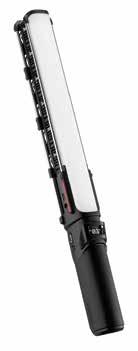
Some models are
CineFLEX 100W
- Bi-Color; SWIT
BI-COLOR SMD
100W - S-2610; WECO
Flexible LED – BNX series;...
This classification allows us to perfectly show the existing solutions aimed at attaining a more adequate lighting when working with video cameras in broadcast recordings, with LED torches and LED panel torches being the most used.
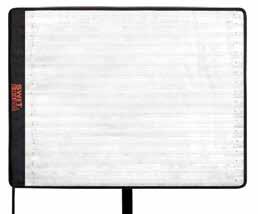
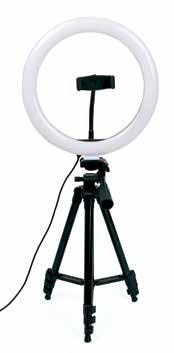
Let's review the most outstanding features and specifications in order to have a better set of criteria when having to compare them at the time of purchase or rental:
1. Light source: LED
(an acronym for LightEmitting Diode) is the great winner at present and it is a good idea to be acquainted with the type of manufacturing for our installed LED devices. The number of LEDs and the design of the housing of the devices offer us different angle beams, allowing from a precise, concentrated type of light that is typical of LED torches, to a more open and scatter light such as the one provided by LED panel torches, LED Minipanel or LED rings.
2. Luminous power:
This data or technical specification is one of the most important when choosing the model for accessory, since it is determined by the number of LEDs included and/or by
the power resulting from each of them. It is expressed in Watts (20 W, 45 W...).
3. Chromatic range:
LEDs have made it possible to obtain RGB ranges and all their possible RGBW or RGBWW variants in a very convenient and affordable way.
4. Color Temperature:
This feature is fully implemented in this type of lighting fixtures with a wide range (depending on the model), ranging from 2,500 to 10,000 degrees Kelvin as modified by a specific dial. Some manufacturers refer to this range as Bi-color.
5. Brightness levels:
This value is highly variable among manufacturers as testing is required, but the results are getting increasingly higher. We can mention some: 1,950 lux (measured at 0.5 meters and 4300 ºK); 2,000 lux (measured at 0.5
meters and 5600 ºK) and 3,881 lux (at 1 meter and 4300 ºK).
6. CRI: It stands for Color Rendering Index. It is a unit that measures the ability of a light source to display the colors of objects faithfully as compared to an ideal light source or to a natural source such as sunlight. This is measured in values ranging from 0 to 100, considering 100 the value that comes closest to perfection in terms of color reproduction.
Currently, the CRI value in this type of accessory stands at 96+.
7. TLCI: It stands for Television Lighting Consistency Index. It is a single score averaged up to 100, which is determined by the color response that would be obtained when using a video camera. A TLCI in the 85-100 range does not need any color correction, a score of 70-85 would need a
simple correction, and a score of 50-70 would required a complex color correction.
Currently, the CRI value in this type of accessory already reaches 97+.
8. Light power control:
Without a doubt, another of the options that already come standard in these accessories. It is a control that allows us to regulate (by continuous dimmer) the intensity of the light source from 0% to 100%, that is, from being off to giving maximum power or full light.
9. Monitoring of color parameters: When the device allows us, by means of a specific dial or through menu navigation to freely adjust the HSI (Hue, Saturation and Intensity) parameters to create light effects related to the color result.
10. Cooling system: Each manufacturer applies different solutions, but
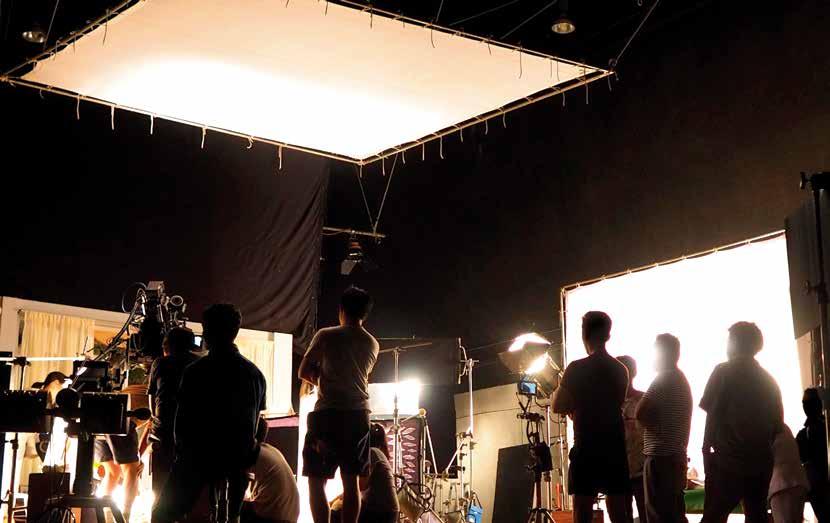
always substantially decreasing the size of the fans, with gyroscope-optimized heat sinks and FOC fans, and optimizes the air flow inside the unit (Silent Passive Cooling). The purpose is to ensure that there is no overheating during a prolonged use of the lighting fixture and even at maximum power.
11. Battery: Rechargeable, more duration and integrated. Currently, batteries with a capacity of 4,500 mach can be used, which can guarantee a continuous
use of 40 minutes at a maximum power of 20 W, 1:20 hours running on 10 W and up to 3 hours on 5 W, for instance. It is important to choose a fast-charging system (with USB-C connection and PD - Power Delivery protocol).
Some manufacturers keep the power supply under a type of battery that is very popular in video cameras themselves (power supply through DV adapters to choose from: Sony NPF, BPU, Panasonic CGA, VW, JVC BN-VF, BN-V, SSL
or CANON BP, LP). And some even make it possible to power the equipment with AAA or AA batteries (three, four or six of them, depending on the model).
12. Size, weight and portability: Without a doubt, the various manufacturers choose to design and develop very lightweight equipment, knowing where and what for it is going to be used in broadcast video recording. For example, about 200 grams and measures of 78 x 78 x 35 millimeters.
13. Fixing systems:
Accessories that go in a camera shoe are the most common, but it is also recommended that they feature a universal thread (1/4") of a photo/video camera tripod, kettledrum or monopod; and some even have a magnetic support on the back that allows the device to be placed almost anywhere that magnetized.
14. Estimated LED life:
Always depending on the use and maintenance of the equipment we can find accessories with a lifecycle of 50,000 hours.
15. Light modifiers: Very important for working, directing and shading the lighting of each of the different solutions described above: visors, filter holders, diffusers, color temperature correctors, blades, bee panels... There are several fastening systems, from pressure-based to
thread systems, through the most modern magneticbased systems.
16. IP protection:
Basically, IP20 protection is the most common, but we find IP65 normally in LED Minipanels, that allow working outdoors.
17. Other items:
Everything that can be included is welcome, always considered
as an extra for the accessory that we may buy or rent:
› FX light effects (Creative FX: SOS, TV, blinking bulb, candle, flash and fire).
› Presets in color intensity variations.
› Activation of music mode: It also allows to emit lights and colors in synchrony with the rhythm of the music.
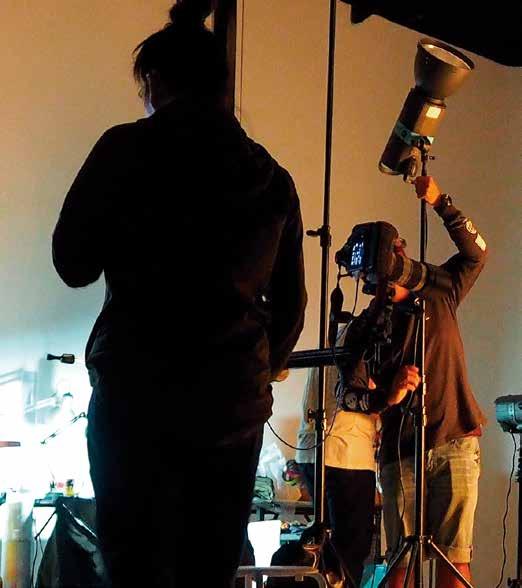
› Bluetooth wireless control, where the main lighting parameters can be configured through a free app.
› Syncing of multiple devices for more power and creative freedom.
› Submersible.
› Case and/or carrying bag.
Within the range of LED torches and LED minipanels for broadcast video recordings, there are numerous brands that are offering solutions, either as standalone equipment or in the form of a kit or combo. Thus, we can highlight some such as: ZHIYUN, CONST BROADCAST EQUIPMENT, F&V, VIBESTA, SWIT, NANLITE, GODOX, APUTURE, CINEROID, FALCONEYES, PHOTTIX, JUPIO, FOTIMA, TECPRO,
VARYTEC, AMARAN, KELVIN, ELGATO, NEWER, BACHIMPORT, CINETUBE, CINEFLEX, NEWER, K&F CONCEPT, ELEGIANT, VICTSING, ROTOLIGHT, DIYIFE, CROMALITE, AVTEC, DÖRR...
This article has allowed us to learn a little more about an essential accessory that we should all have when we engaged in the recording of audiovisual content -piecesin the broadcast video/TV environment.
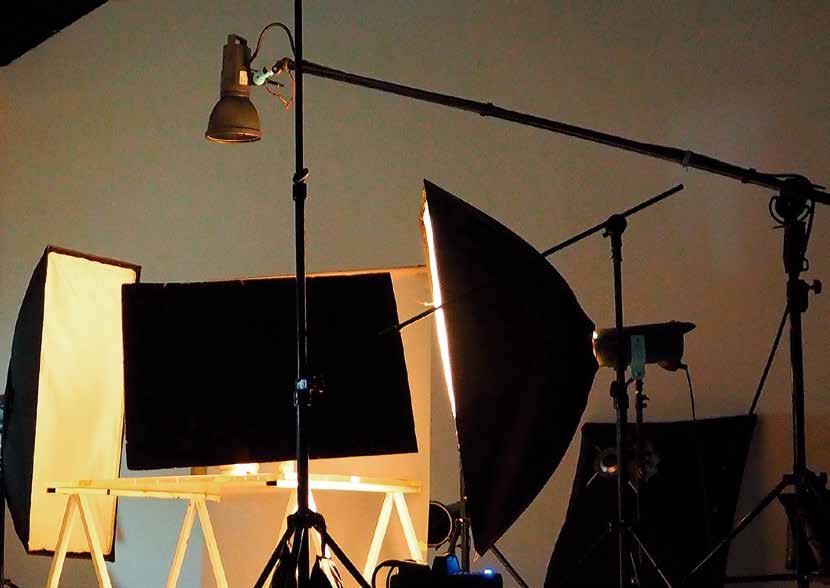


You decide where to store your profession today and tomorrow.
All of us have had some kind of problem, mishap or bad experience with external storage units in both the most private and in professional environments. It is one of the issues that receives the best ratings among users when everything is running smoothly, but one that does not receive the importance it deserves when buying a storage unit or in the care and handling of said units.
Lab test performed by Carlos Medina, Audiovisual Technology Expert and Advisor
Everything is digital. Everything has to be stored: texts, presentations, photographs, audios, music, videos, films...in short, data and more data. This data is much larger and has a more demanding workflow in terms of quality and transfer speeds within the professional environment.
We have had the opportunity to test a SanDisk Professional branded professional storage kit. First of all, this manufacturer is a reference and an assurance in storage solutions, offering a wide range of products.
Since I work in the field of cinema, advertising, television and live events (especially in jobs related to live visuals), I must point out that SanDisk Professional solutions are perfect for the workflows required by these professional environments.
SanDisk Professional is an American company based in Milpitas, California, founded in 1988; from the outset it was positioned in the market as a company specializing in
the design, development and manufacture of flash memory storage devices, including memory cards, pendrives and solid-state disks.
Professional was involved in the development of widely used card formats such as CompactFlash and Memory Stick. In addition, together with Panasonic and Toshiba, it developed the SD (Secure Digital) memory format. A later version -the micro SD memory- is widely used in digital cameras and camcorders, mobile phones, and other devices.
And as a historical fact, in 2016, it was acquired by Western Digital (WD), a global manufacturer of hard drives, integrated circuits and storage products.
Knowing this historical context and given the successes in the different products in which SanDisk Professional is involved, we have to say that the storage kit is a success to be implemented in the audiovisual and live sector. Specifically, we have been able to work with three
pieces of equipment: PRO-BLADE STATION SSD MAG, PRO-BLADE TRANSPORT SSD MAG and a 2TB PRO-BLADE SSD MAG unit.
The basic principle of the three is very simple: just read, record, copy, transfer or save data on a storage medium, specifically based on SSD. SanDisk Professional offers us the
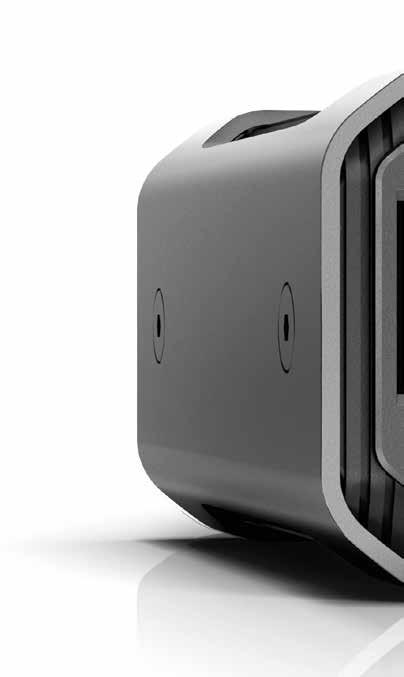
best when it comes to consider the needs of the audiovisual sector: the SanDisk Professional PRO-BLADE modular SSD ecosystem.
Thus, the PRO-BLADE STATION SSD MAG is a stationary device for places and environments where mobility is not necessary as, for example, video editing rooms or video/audio
post-production; the PRO-BLADE TRANSPORT SSD MAG is designed to cover jobs where the portability of the SSD storage units required as, for example, when making camera recordings on external units and in visual releases for a live event.
Many of our readers know perfectly well the importance of a concrete,
closed and efficient solution when working with external storage units; but still others think that all manufacturers, models and brands that manufacture this type of equipment do exactly the same. And this is the big mistake, especially within the professional environment of audiovisual and live events.


A large amount of data and files; very demanding qualities in terms of resolution, number of frames per second and compression levels; delivery times and immediate checks; continuous changes and permanent integration of data within the workflow; backups and live work are all essential parameters that must be taken into account to understand that some manufacturers have specialized in the professional world.
The read/write speed tests carried out with different applications and software have yielded results that have been very satisfactory. Also with the transfer of files between different internal and external storage drives. We tested the SanDisk Professional PRO-BLADE Ecosystem Kit with different computing environments, from Mac to PC, with different speed specifications on different computers and versions of different operating systems.
The software packages we used for testing were: AJA System Test, BlackMagic Disk Speed Test and
CristalDiskMarK, under different configurations. Regarding the type of audiovisual file in terms of resolution, we used from 720x576 (PAL) to 8192x4320 8K, as well as 4096x1714 4K DCI 2.4:1 among others. As for coding, we ran tests using different codecs: AVC-INTRA 50, CANON raw, CineForm 444, DNxHR HQX, ProRes 4444, RED ONE RC36, XDCAM EX, among others.
This combination of resolutions and codecs allowed us to test the SanDisk Professional PRO-BLADE Ecosystem Kit with a multitude of signal types (PAL, NTSC, RGB, RAW and/or YUV) and different color depths (8 bit, 10 bit, 12 bit and even 16 bit).
It should be mentioned that the performance of the SanDisk Professional PRO-BLADE Ecosystem Kit may vary depending on the computer equipment involved, so it is best to customize your SSD storage solution according to your own needs and equipment available. It is convenient to make it clear that SanDisk Professional PRO-BLADE
has offered us very high speed results and a high level of security when working with this kit.
Let's review the technical specifications of each of the elements that make up SanDisk Professional Kit, taking into account that it is a modular, scalable and multi-environment solution:
› PRO-BLADE 2TB
MAG SSD from SanDisk Professiona is a state-of-the-art NVMe™ (Non-Volatile Memory Express) SSD. This unit is mounted in an aluminium housing measuring 109.8mm x 28mm x 7.5mm and a weight of 45 grams.
NVMe™ or Non-Volatile Memory Express is a parallel data transfer protocol that utilizes PCI-Express as an interface and is used in SSD M. It was introduced in 2011. This interface guarantees speed, stability, less consumption, maximum performance and very good connectivity with read/write equipment.
PRO-BLADE SSD MAG 2TB can be connected directly to macOS with the APFS
format, or reformatted to be supported by Windows® (mainly with the ExFAT format) under a proprietary multipin concept with the PRO-BLADE read/write equipment.
This SSD storage unit is offered in a range of capacities (1TB, 2TB and 4TB). with great shock resistance (withstands drops of three meters in height and crushes up to 1,814 kg) and does not overheat, to help maintain superfast read/write speeds (depending on the equipment where the NVMe™ SSDs are inserted).
› PRO-BLADE STATION
SSD MAG NVMe™ is a stationary computer that carries fourPRO-BLADE SSD MAG NVMe™ cards, since it comes with 4 read/write slots that can be connected to a computer (compatible with MacOS 10.13 or Windows 10® or higher). That means we can gather up to 16TB1total capacity when inserting up to four 4TB cards each.
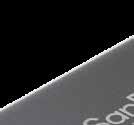
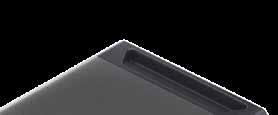
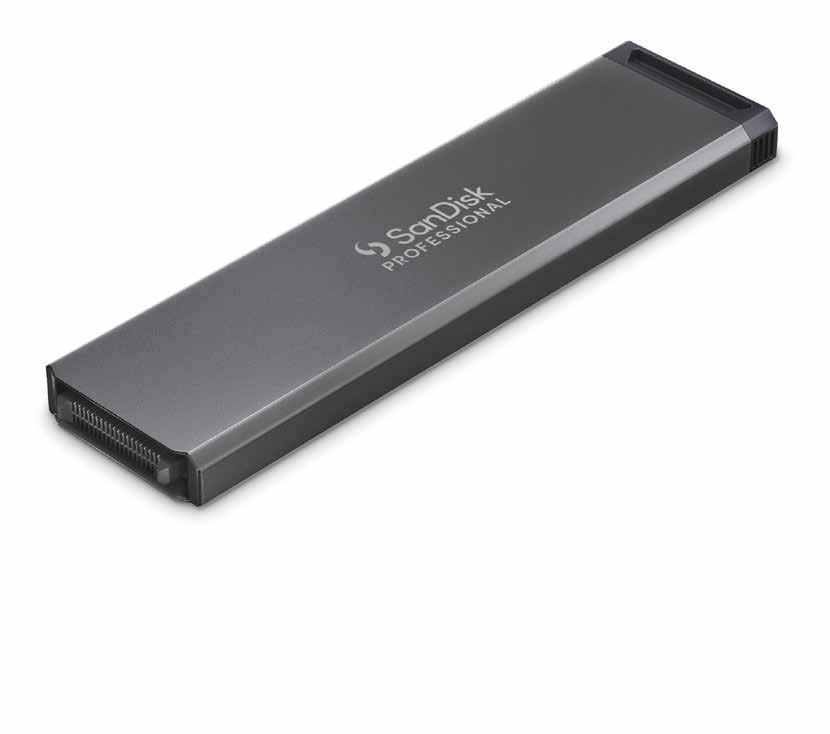
It is a hardly bulky computer measuring 180.4mm x 133mm x 77.6mm and a weight of 1,450 grams (a little over three pounds) that offers the possibility of editing, copying, simultaneous downloads at incredible speeds and moving large amounts of data quickly, with transfer speeds of up to 3,000 MB/s for read and 2,600 MB/s for write.
SSD MAG NVMe™ features an active fan to prevent overheating and ensure permanent airflow. Its noise level is only noticeable when unit is switched on.
Regarding connectivity, it has a USB Type-C™ cable and power supply (100W) with different socket adapters depending on the country. As for connection with the computer for data transfer, it featurres Thunderbolt™ 3 40 Gb/s (with support for USB-C™) with an indication on the cable of the 40 Gb/s data transfer rate. A nice detail is that the cables are color-coded for a better visualization of connectivity.
It incorporates a flashing LED light line in the lower front that gives us information on whether
the units are working/ transferring data. In addition, it displays the different PRO-BLADE SSD MAG NVMe™ cards separately on the desktops for better user accessibility.
› PRO-BLADE TRANSPORT SSD MAG is a portable piece of equipment with superfast transfer speeds of up to 2,000 MB/s for read and write. It is SanDisk Professional's solution to deal with work environments where little weight and assurance are required in data transfers, for example, in a shooting with external storage directly from the camera or in the launch of visuals in live events.
PRO-BLADE TRANSPORT
SSD MAG features a heat sink to help maintain an ultra-fast transfer speed and USB-C (20 Gb/s) connectivity

to the computer (with support for MacOS 10.13 or Windows 10® and higher versions).
Size is 130.4mm x 71.5mm x 16mm and iweighs 165 grams. A small flashing led on the front indicates its operating status. Also, the cable with the USB-C connector (20 Gb/s) is marked with color.
Regarding price, it is reasonable, considering it is a modular option
under the prism of versatility, scalability, high performance and secure connectivity. In any case, SanDisk Professional (Western Digital (WD)) presents on its website different cheaper storage solutions (https://www. westerndigital.com/es-es/ products).
Finally, the design and finish of the SanDisk Professional PRO-BLADE Ecosystem is minimalist, elegant, lightweight, compact and
safe, a fitting image for professional equipment.
Quality, speed, safety, modular versatility and impeccable design are the five qualities that best define PRO-BLADE STATION SSD MAG, PRO-BLADE TRANSPORT SSD MAG and a 2TB PRO-BLADE SSD MAG unit.
SanDisk Professional offers us solutions and it is just a matter of deciding where to store your profession today and tomorrow.
SANDISK PROFESSIONAL PRO BLADE STATION
